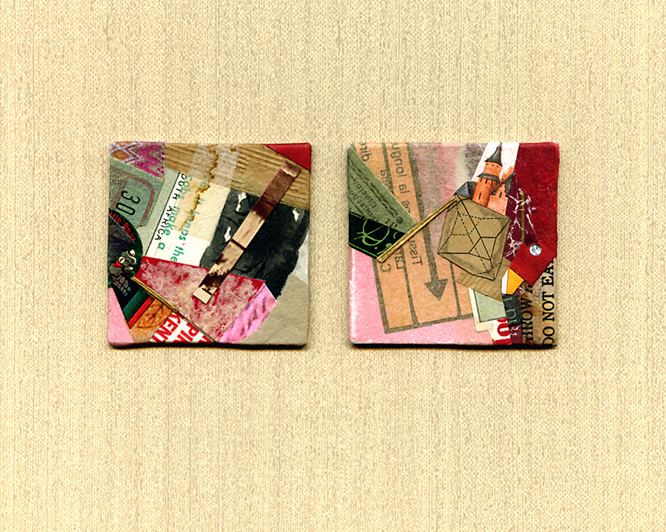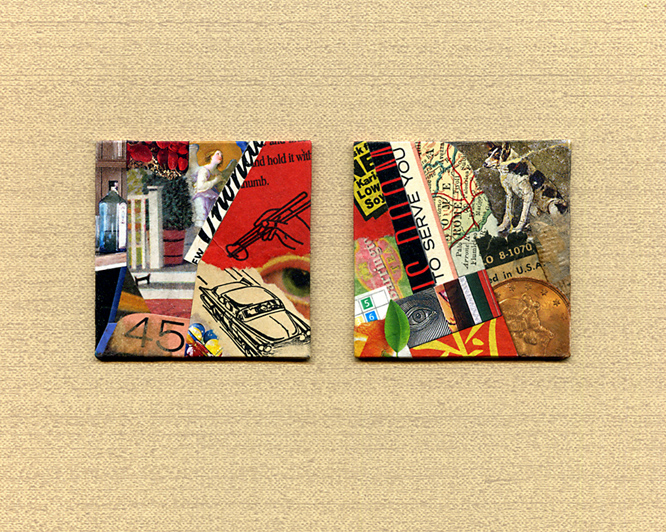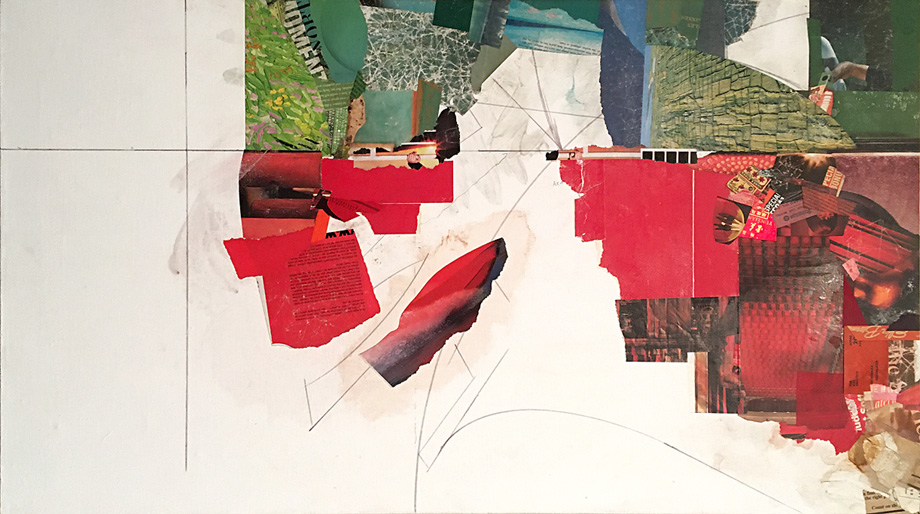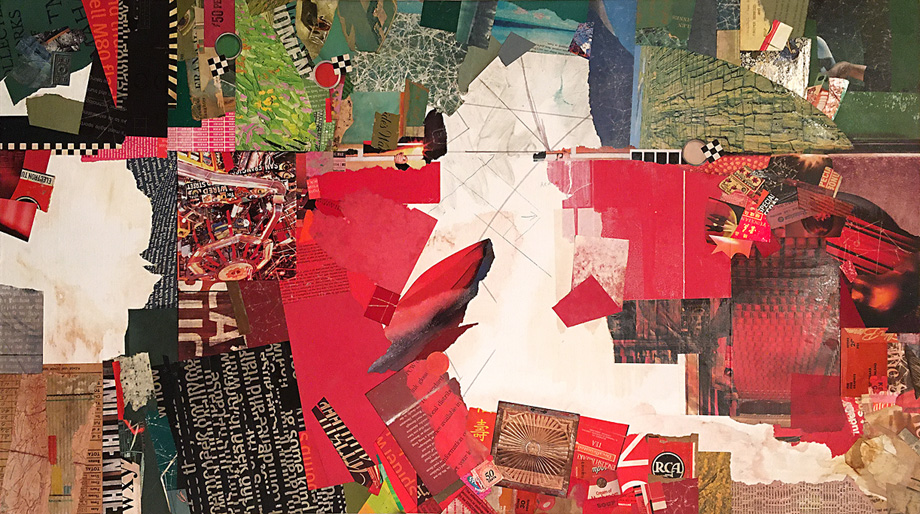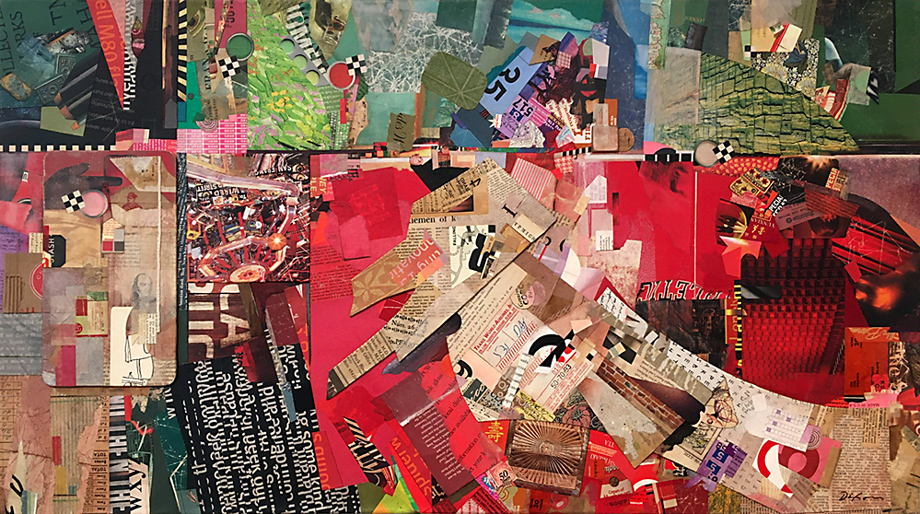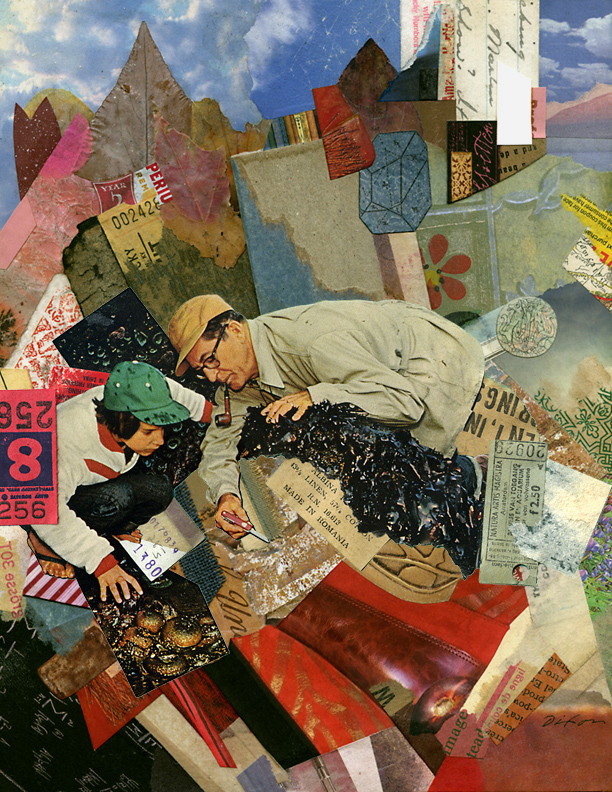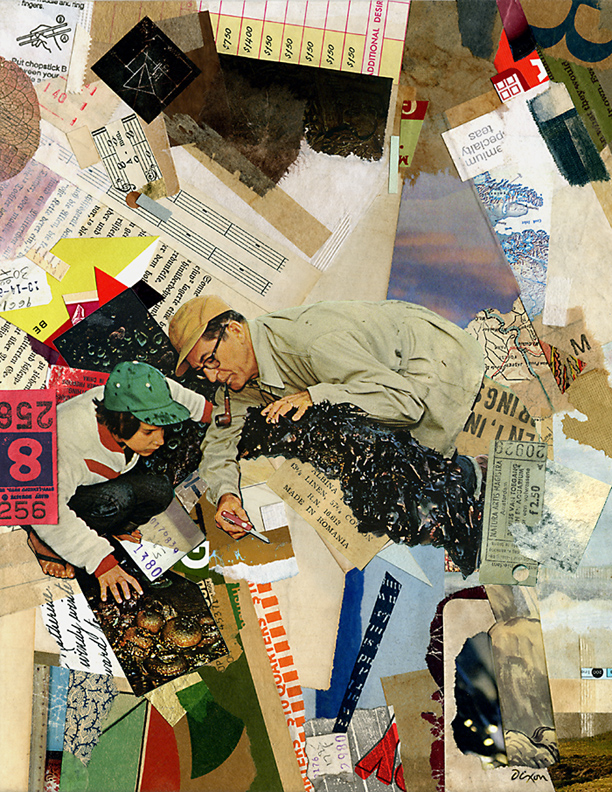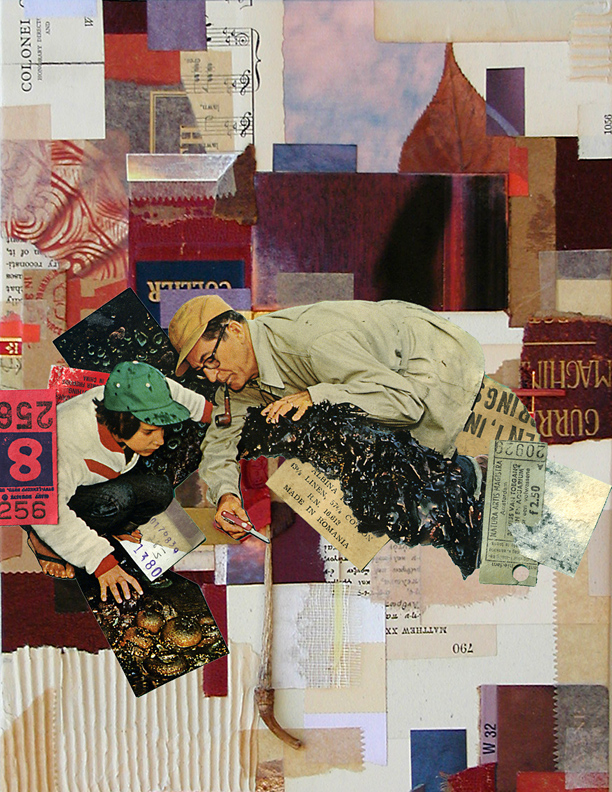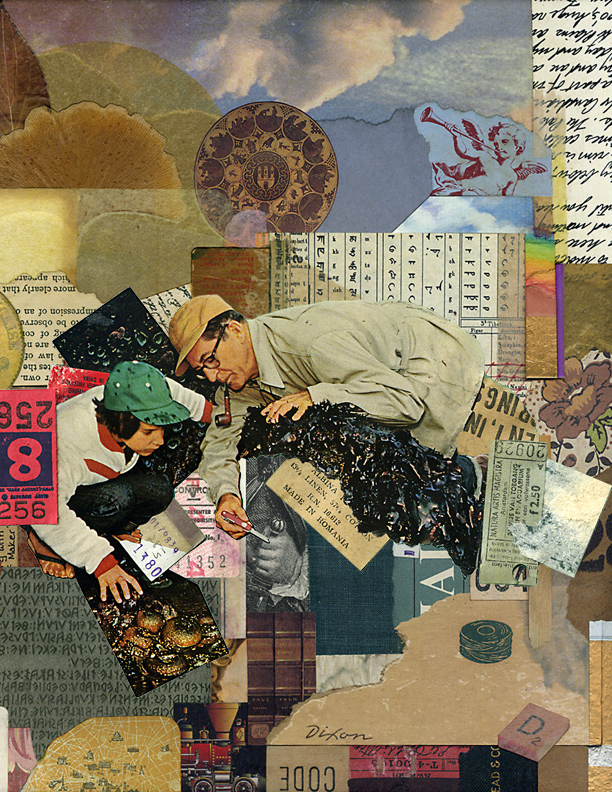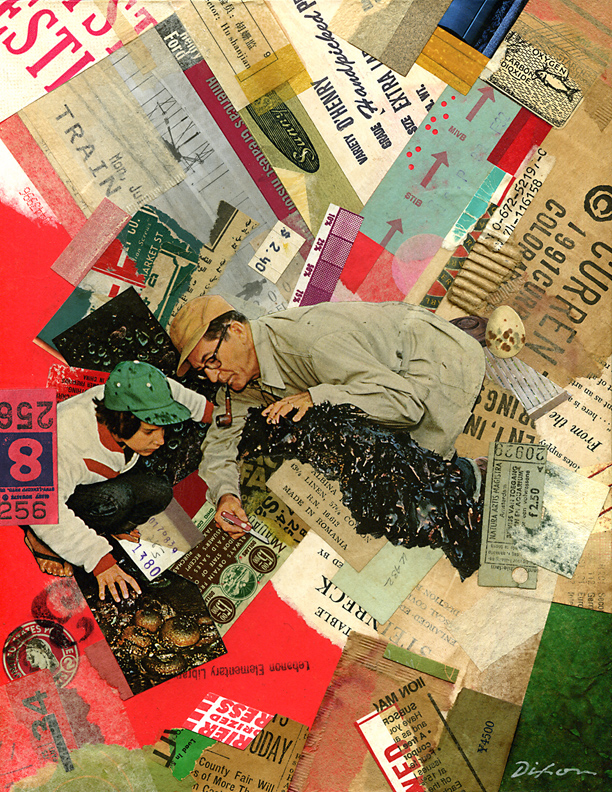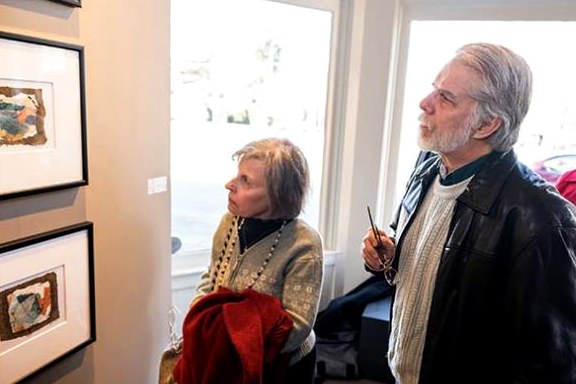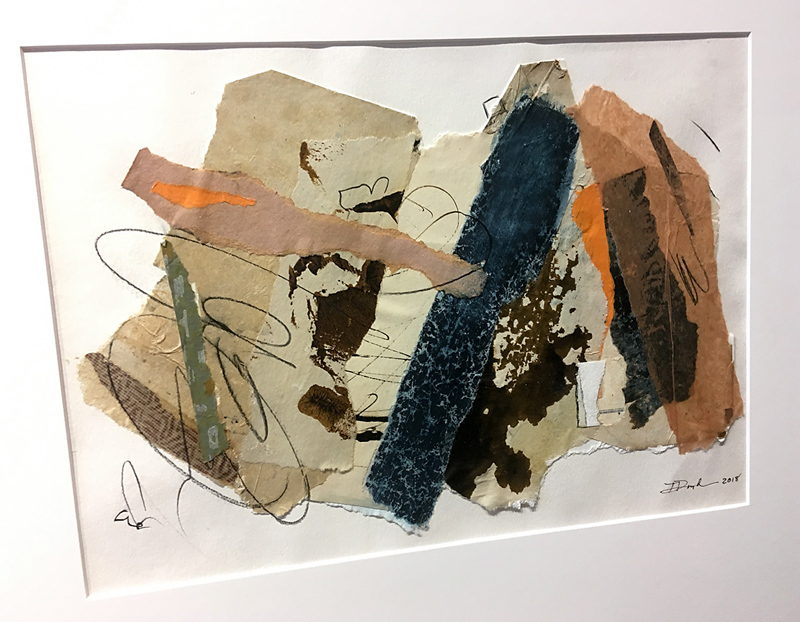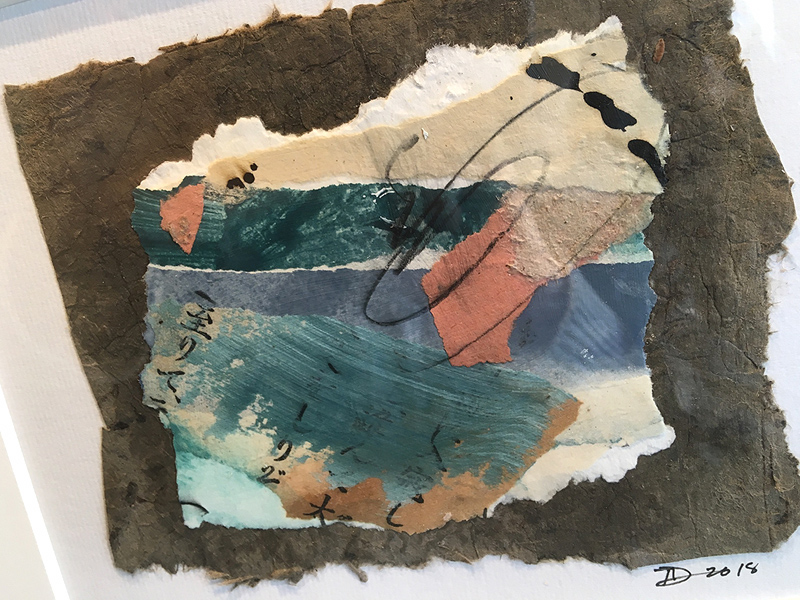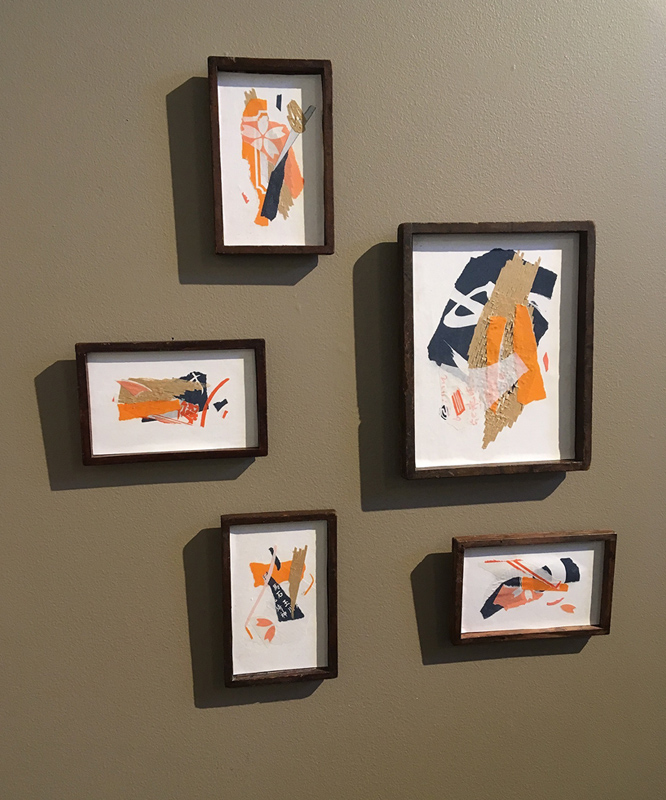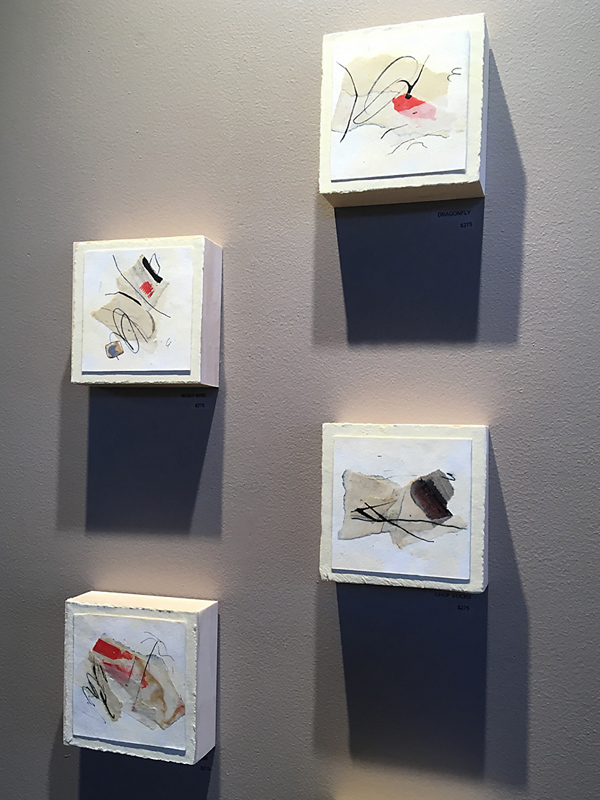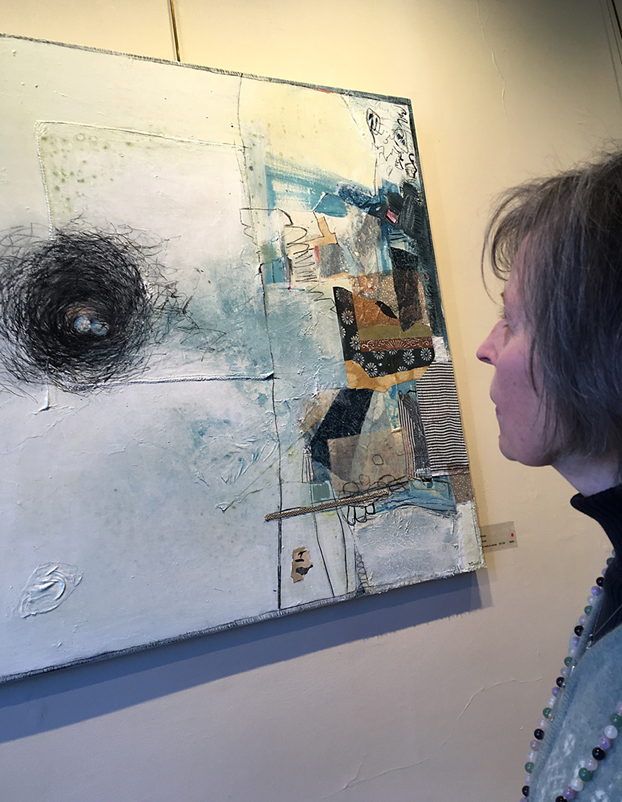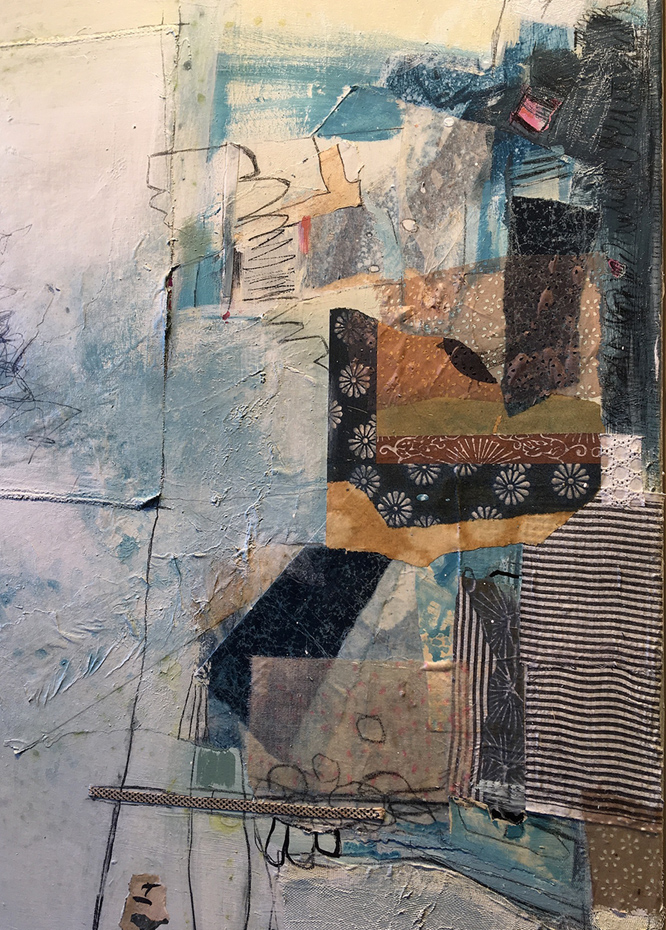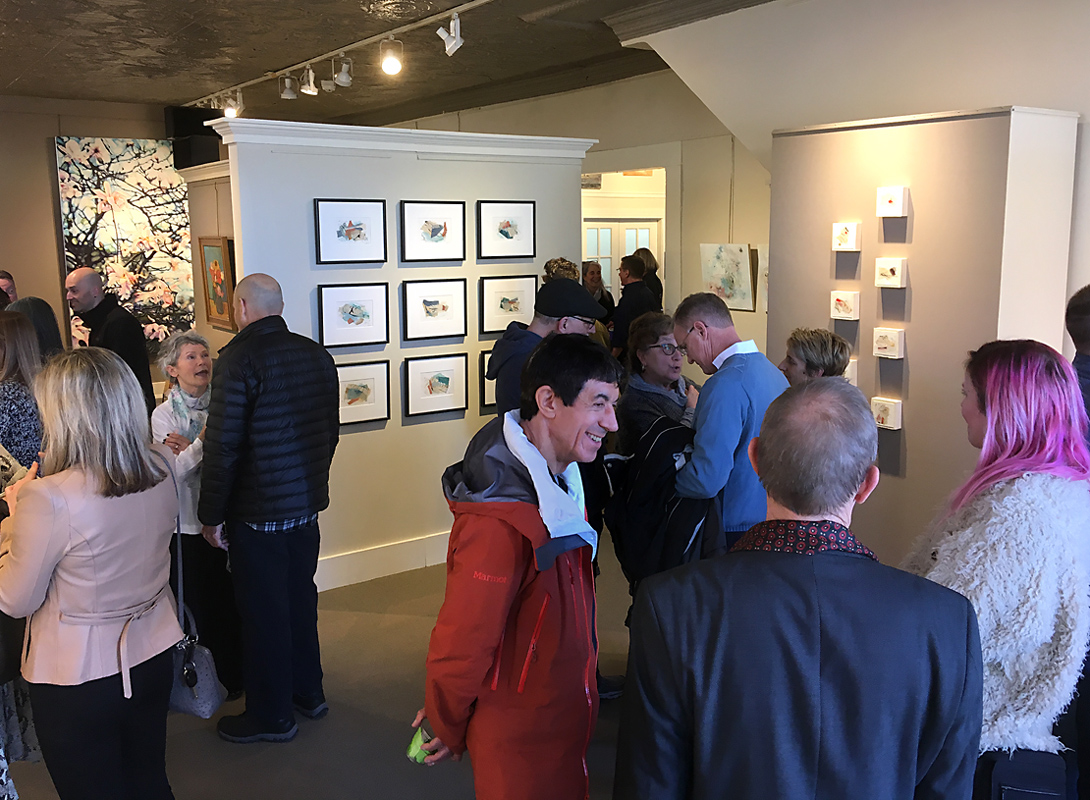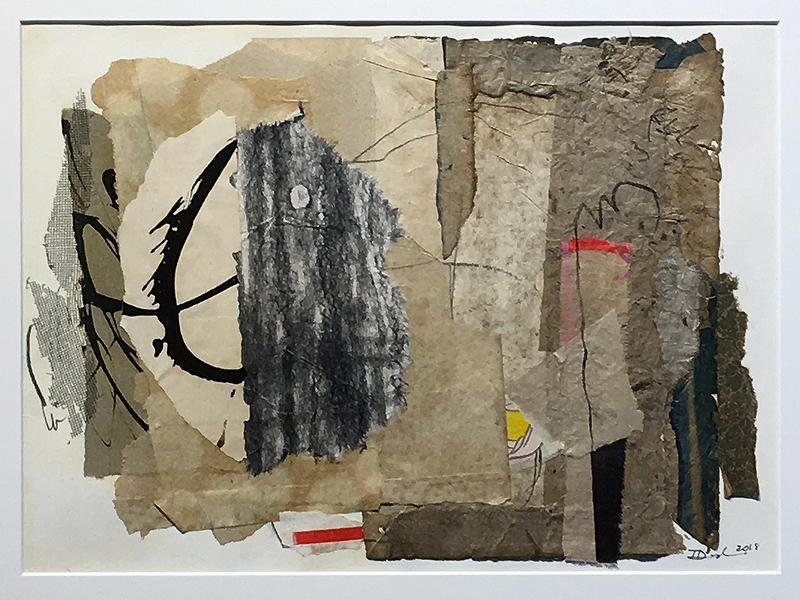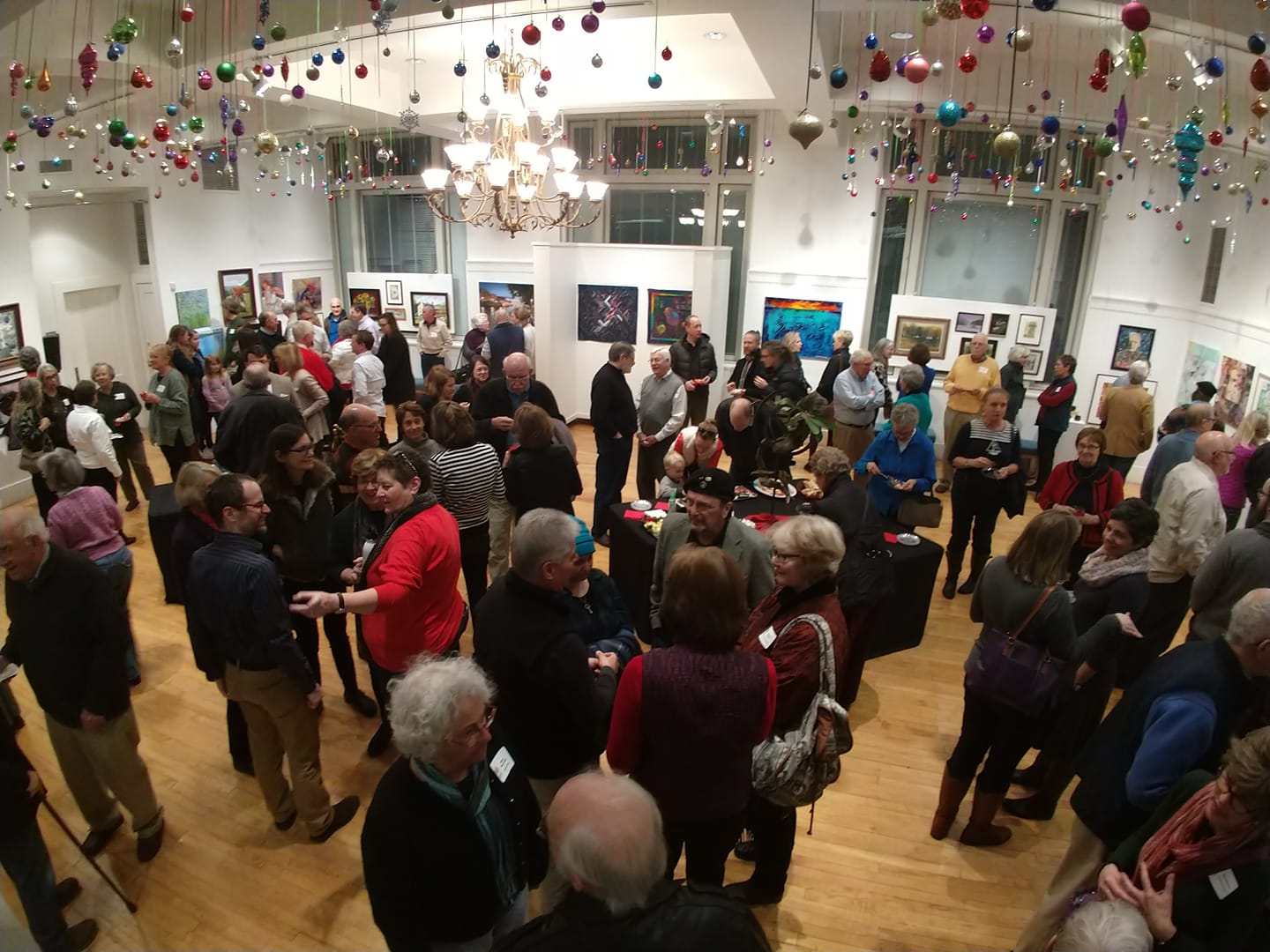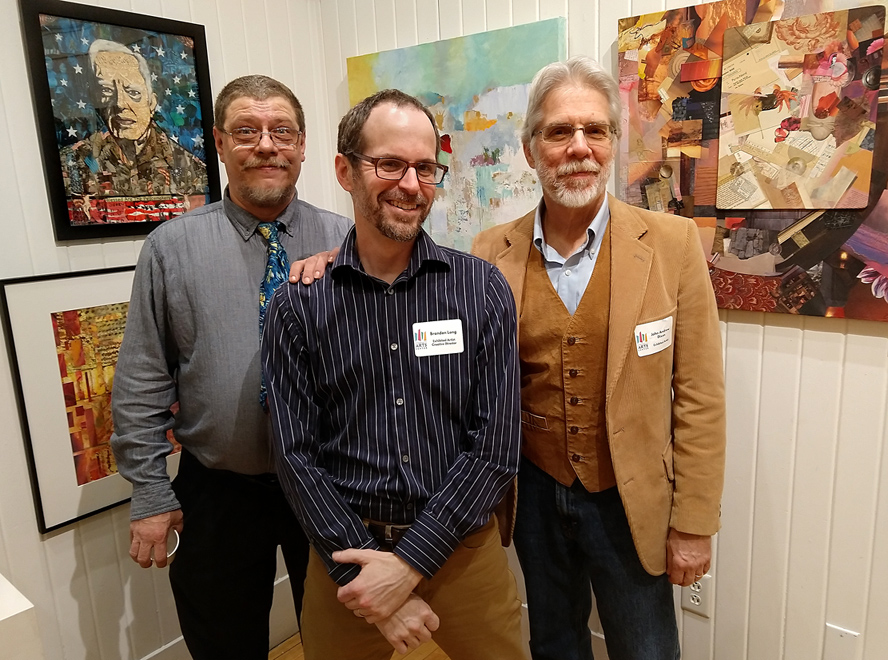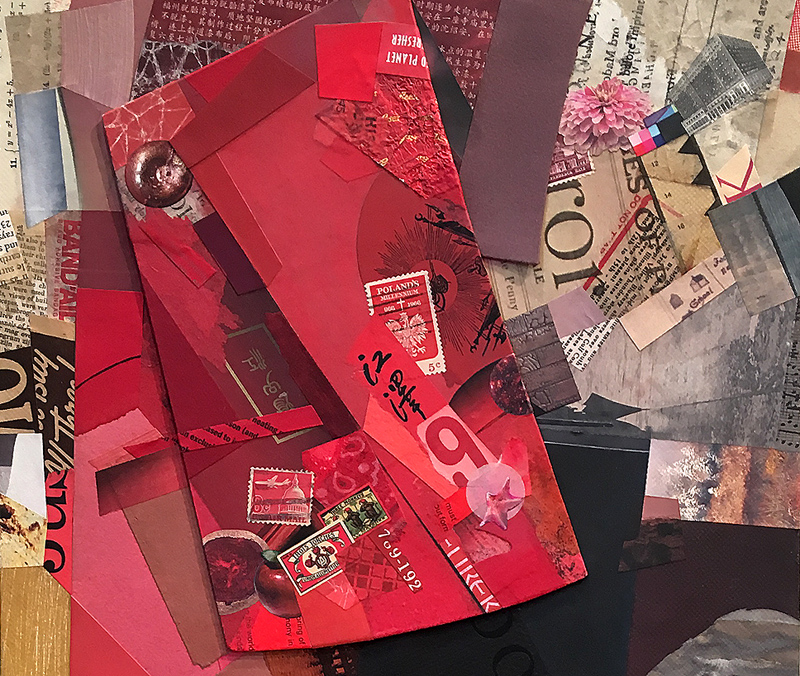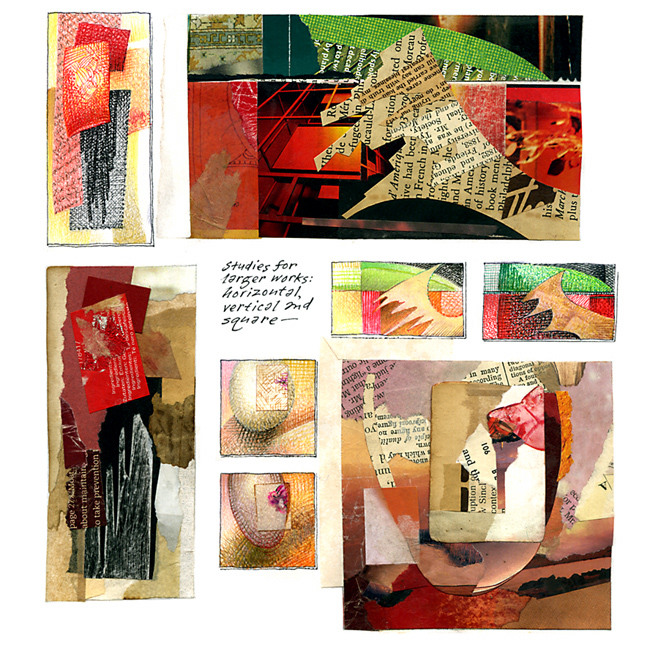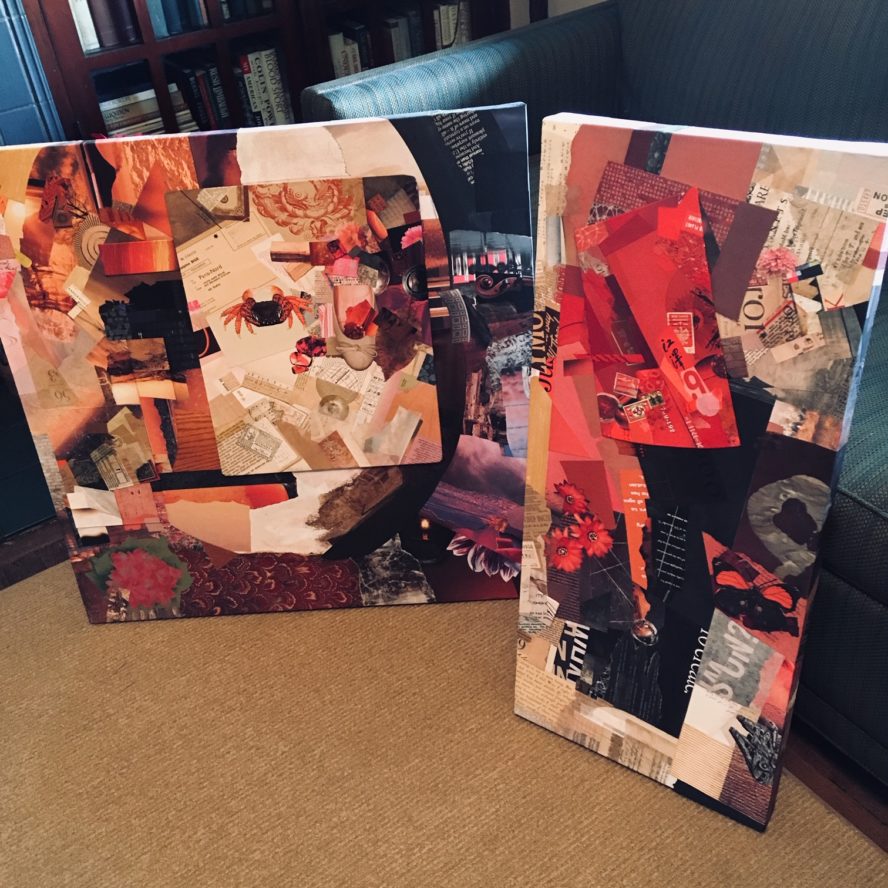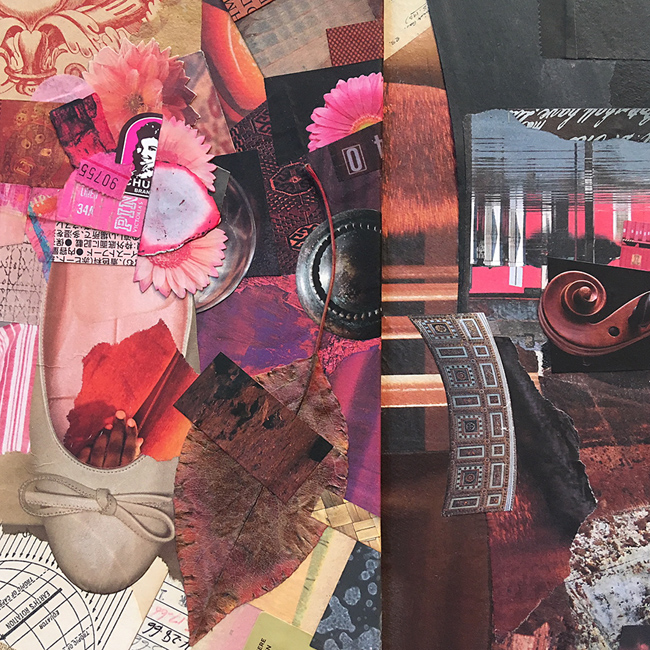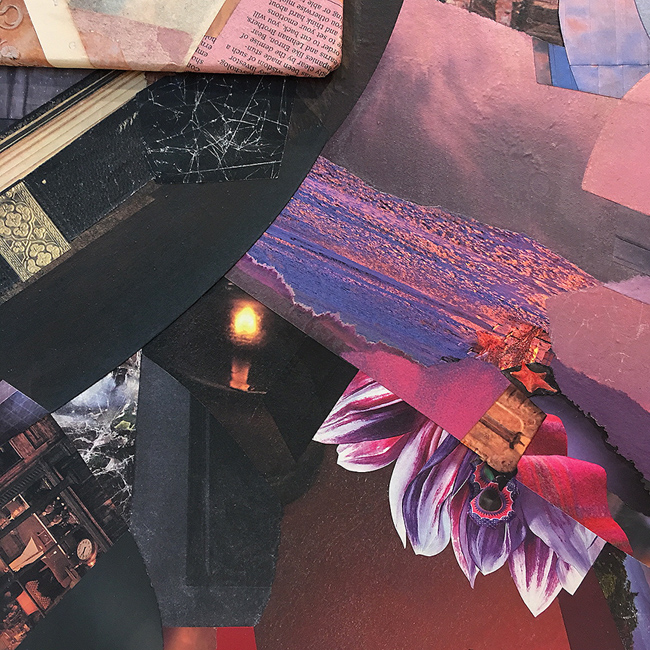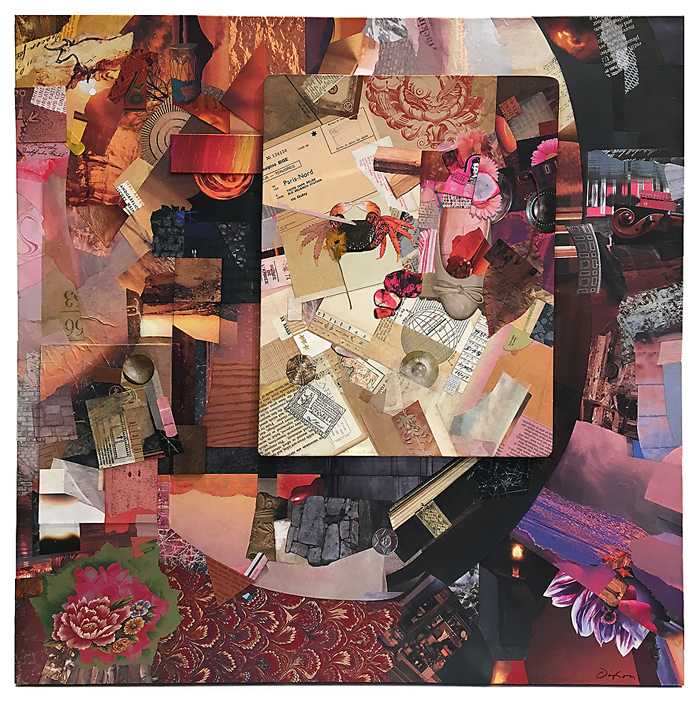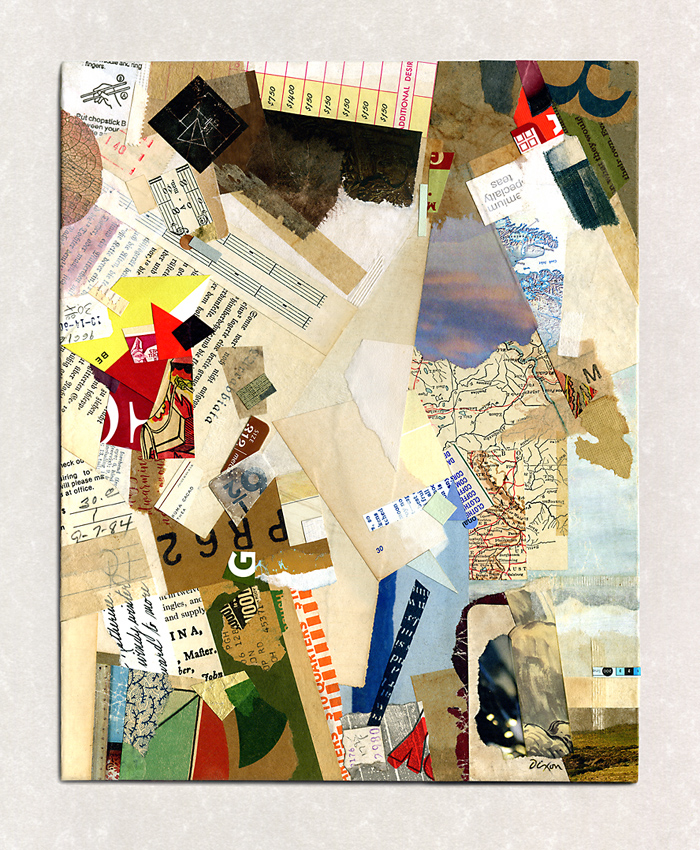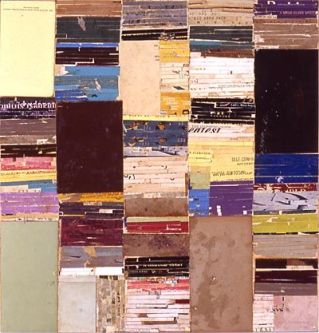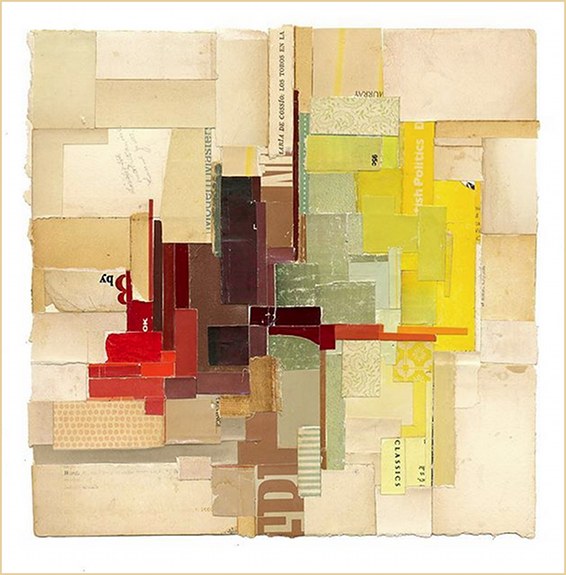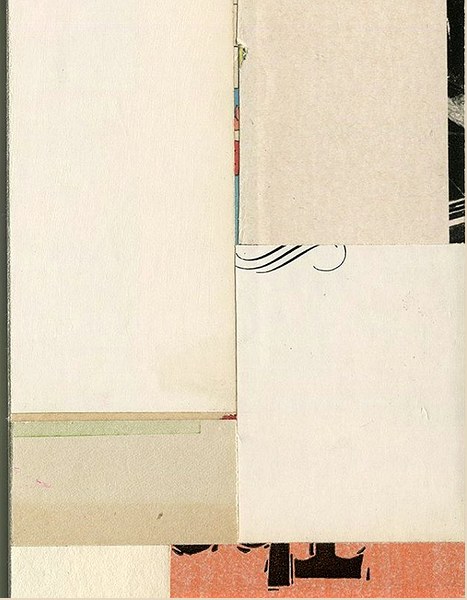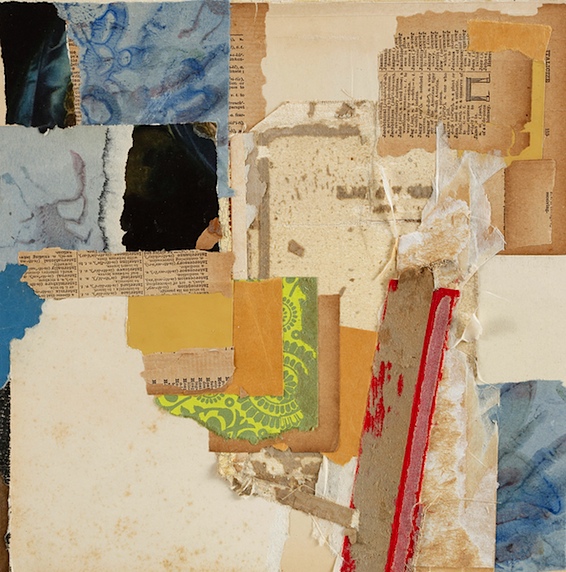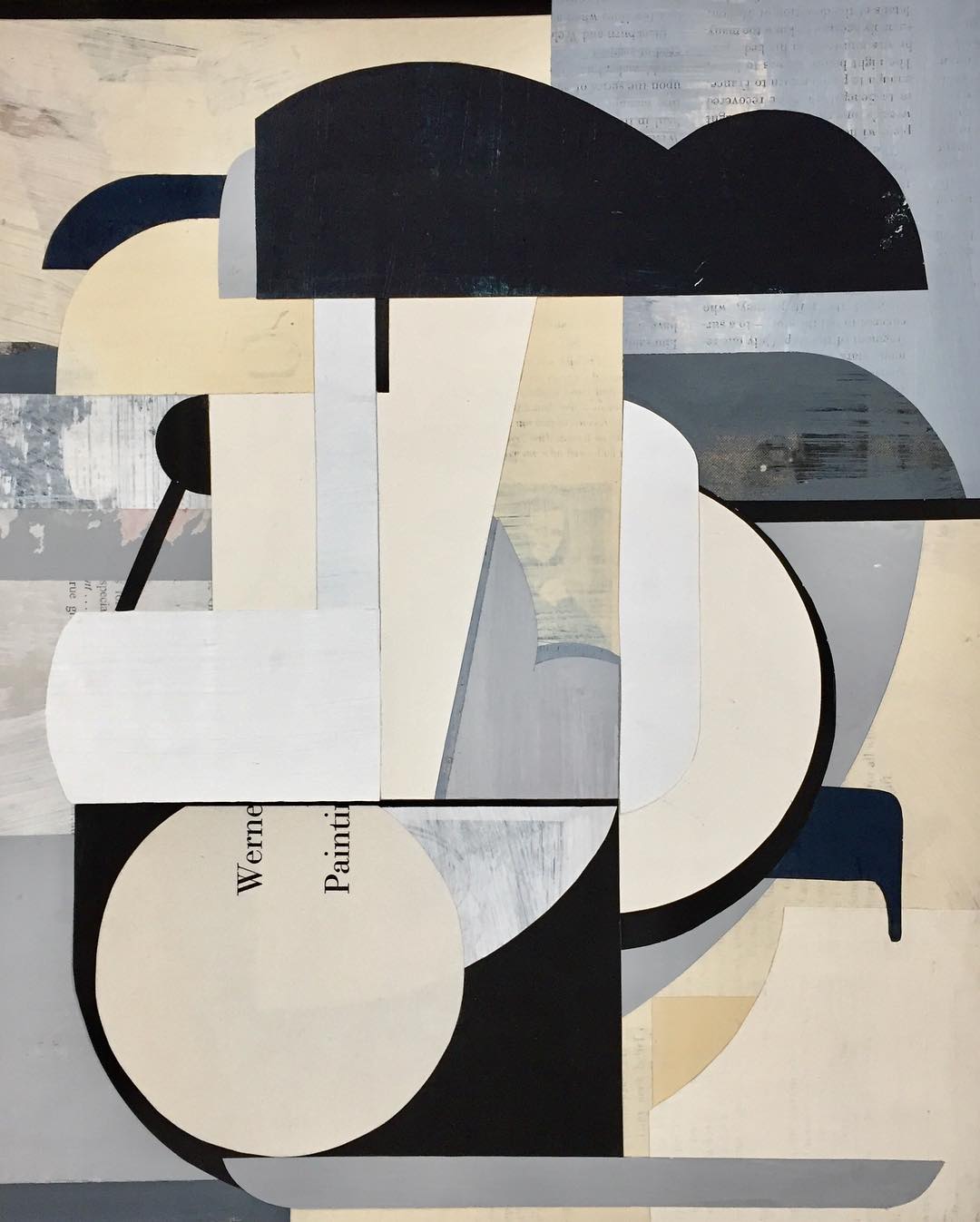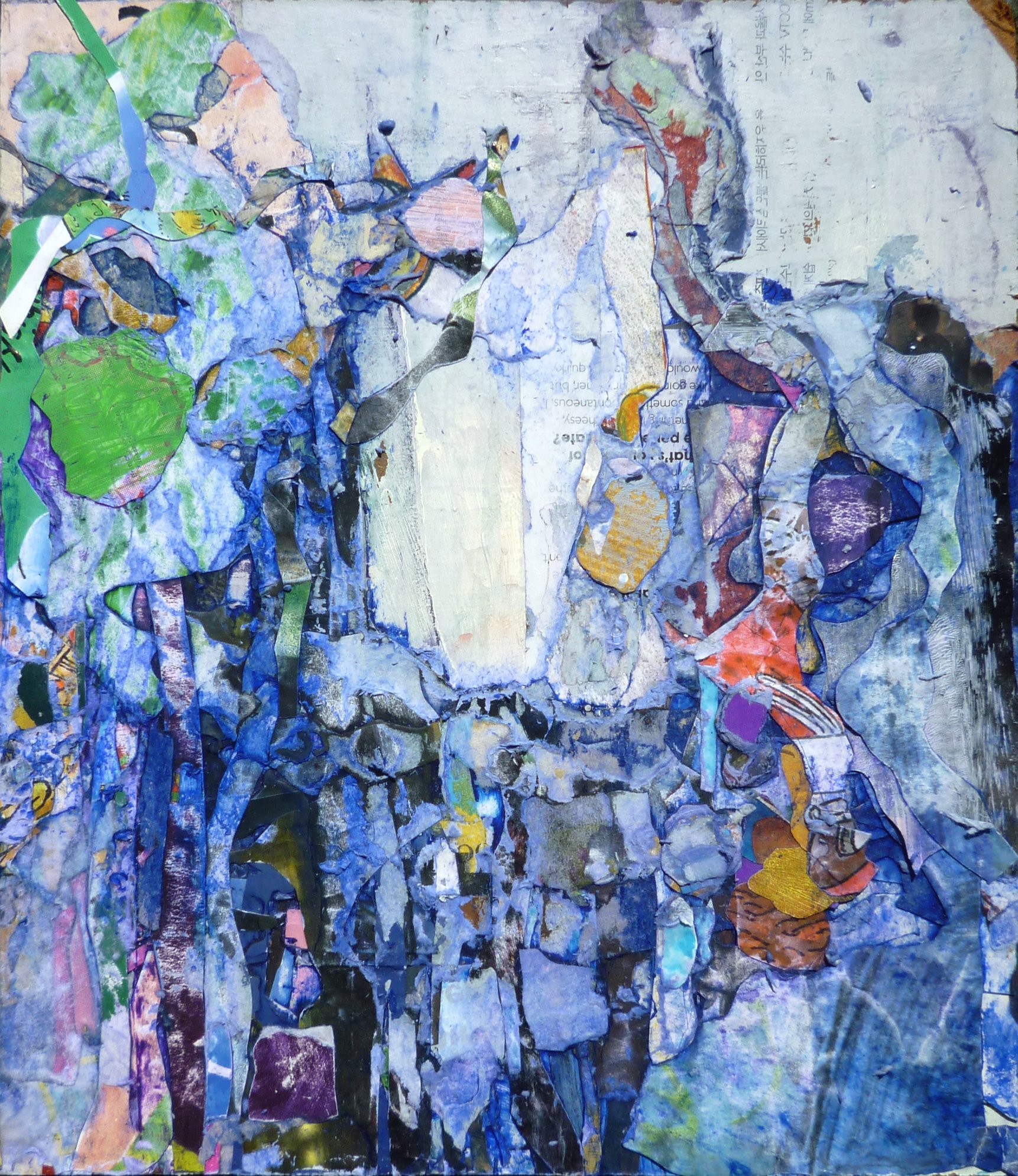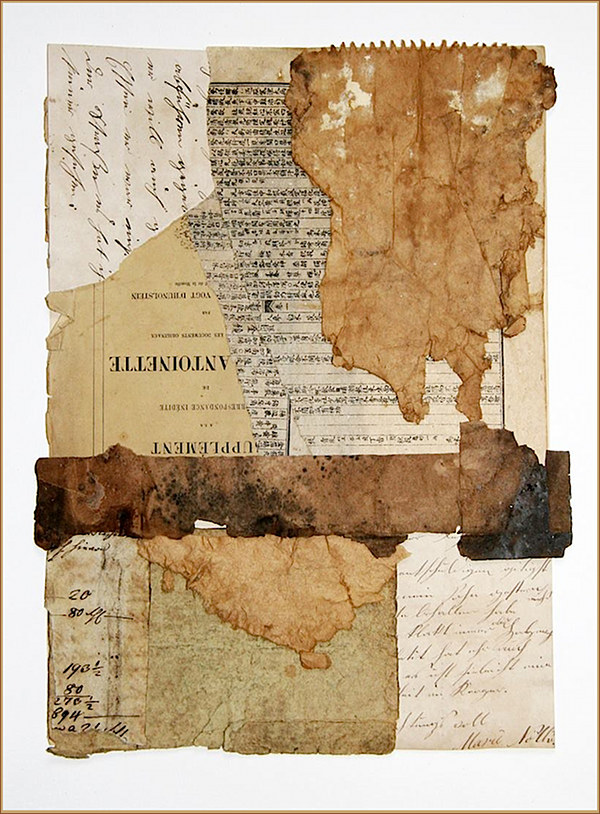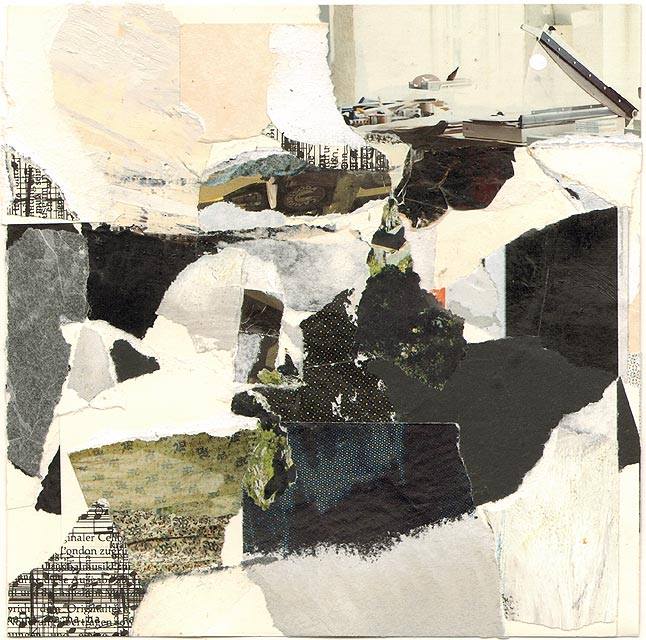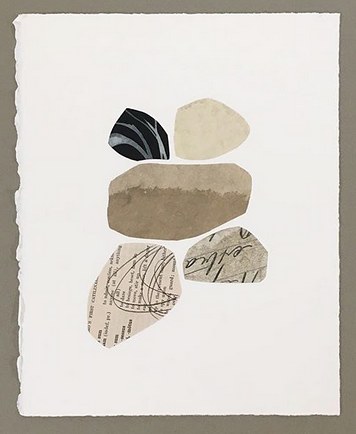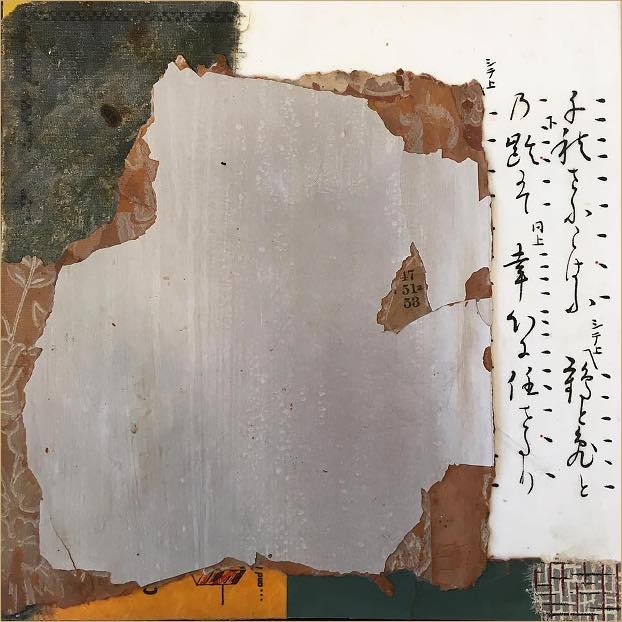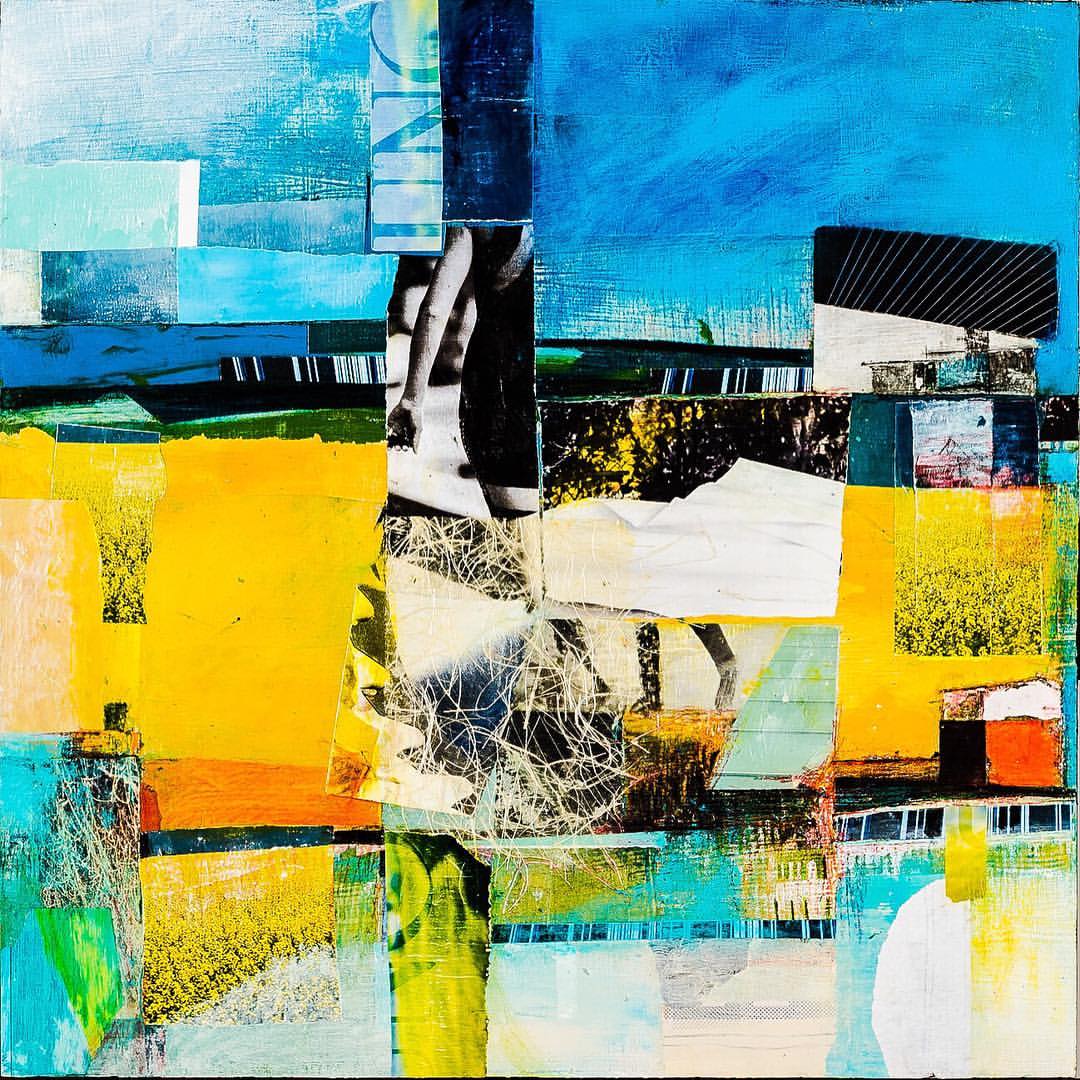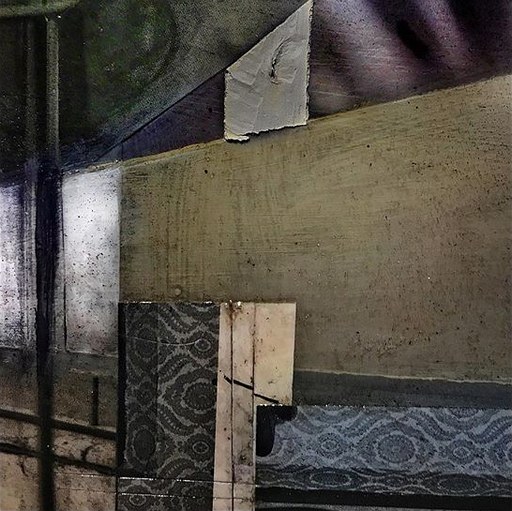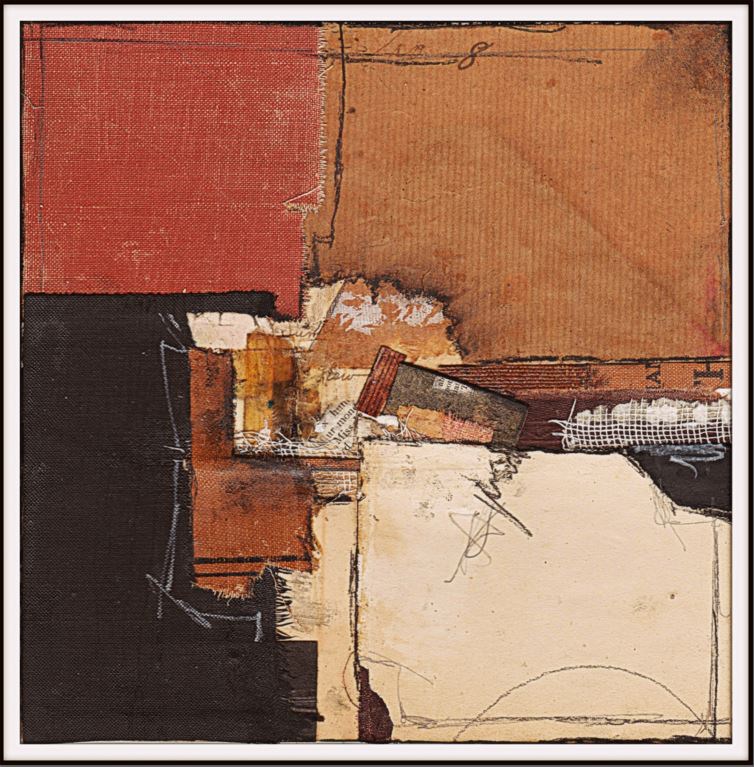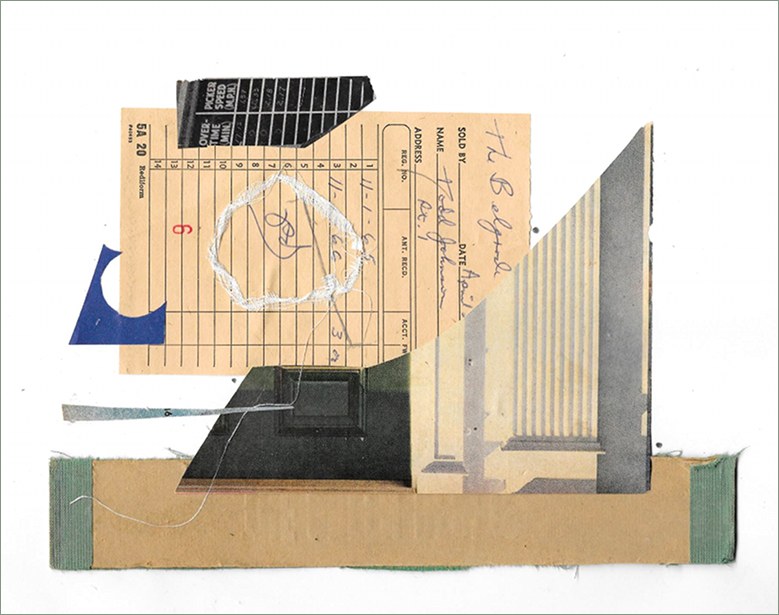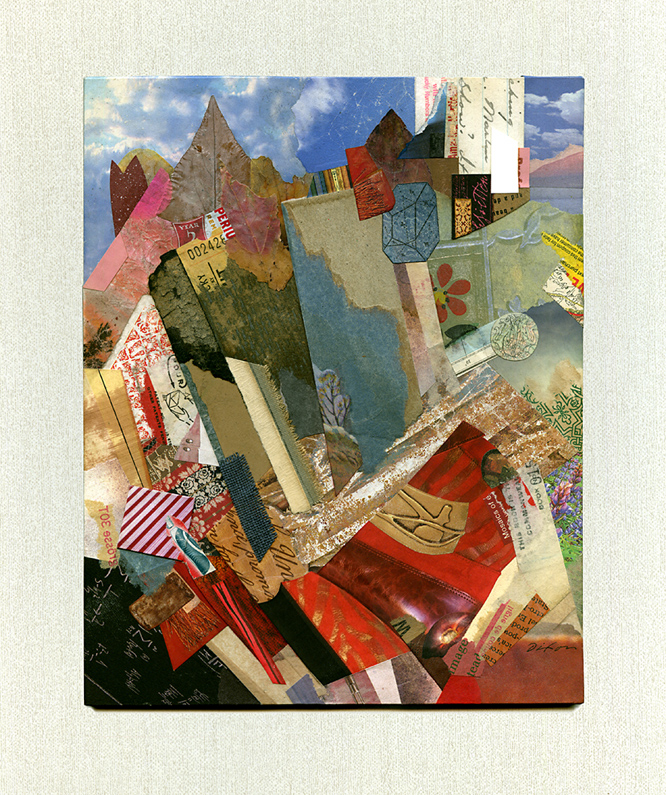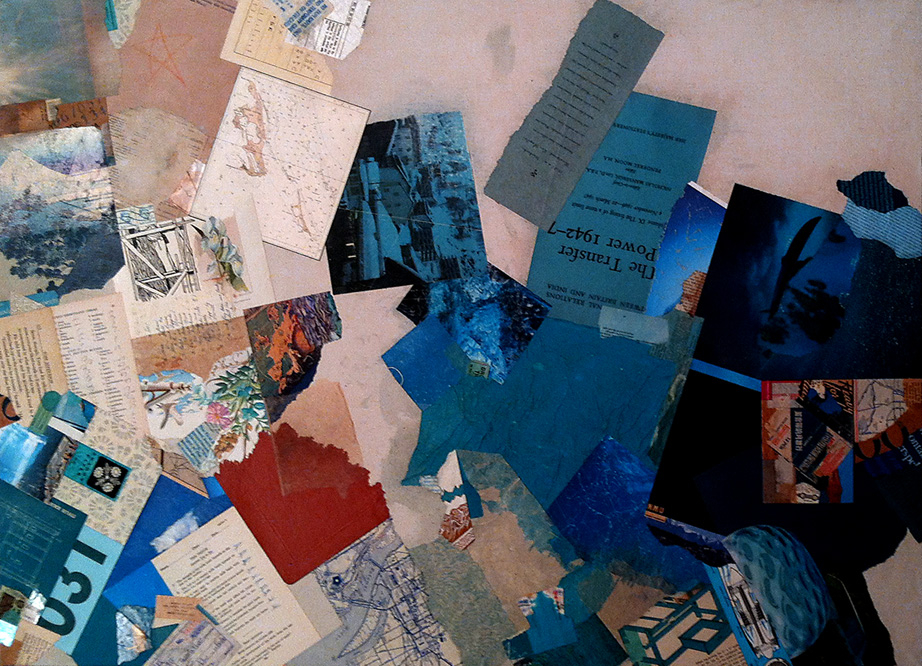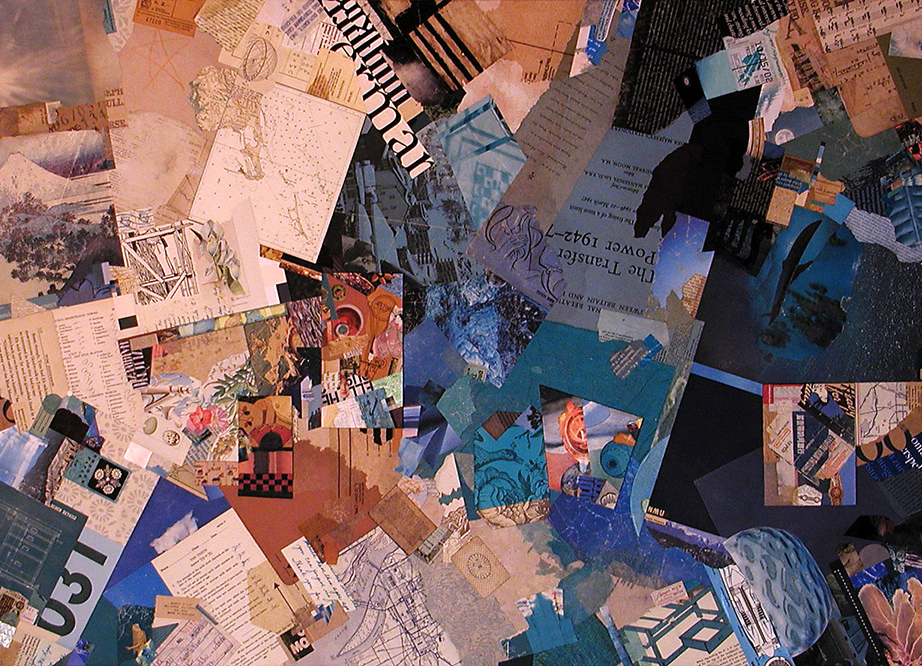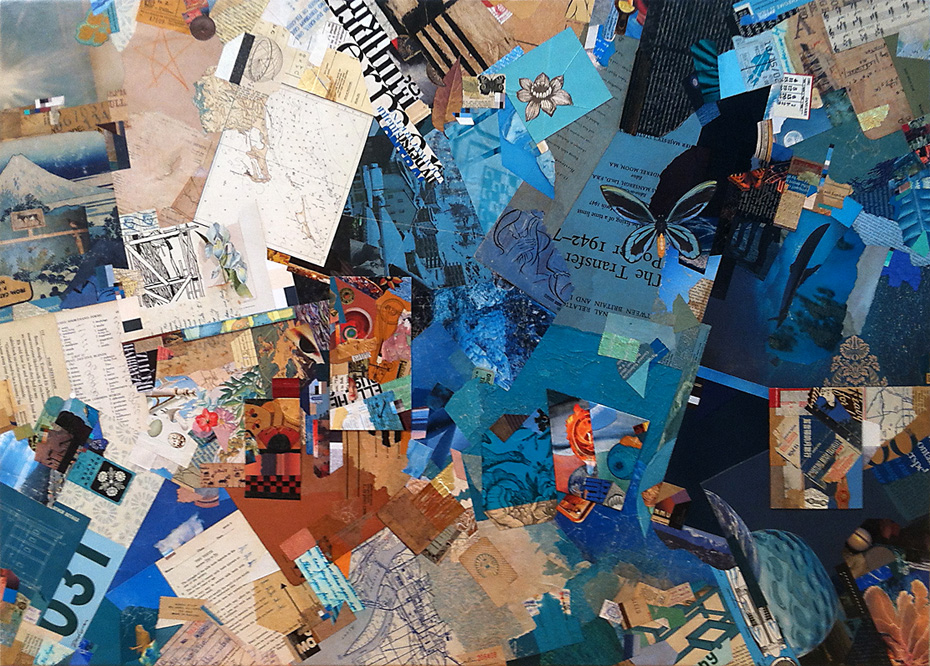Forgot to Make Merz (diptych 30)
collage miniatures by J A Dixon
1.75 x 1.75 inches each
left square | right square
available for purchase
< back to the comprehensive page of collage diptychs
Archive for the ‘Abstraction’ Category
Forgot to Make Merz (diptych 30)
Saturday, July 18th, 2020Forgot to Add a Bird (diptych 45)
Monday, July 13th, 2020Forgot to Add a Bird (diptych 45)
collage miniatures by J A Dixon
1.875 x 1.875 inches each
left square | right square
available for purchase
< back to the comprehensive page of collage diptychs
The Apprentice Merzologist
Sunday, November 17th, 2019“For some time, we have been inspired by the work of mr.babies. He frequently uses large eyes and sweeping vistas. His work, while expressive and multicolored, also hints at the human longing for place. mr.babies is known for posting a series of images that integrate one shared element placed on a variety of backgrounds At the end of the series, the viewer often finds the completed piece. To us, this visually represents the (often lifelong) journey to find belonging.”
— Doug + Laurie Kanyer
Kindly take a look at my submission to the OPEN CALL opportunity by the Doug + Laurie Kanyer Art Collection on the theme of “finding a place of my own.” The Yakima-based couple are building a repository of contemporary collage and using Instagram, Facebook, and other devices to elevate their agenda in the art world.
My take on this idea is to turn inward on the medium of collage itself, with a veteran “Merzologist” mentoring his young protégé on the intricacies of the Kurt Schwitters legacy.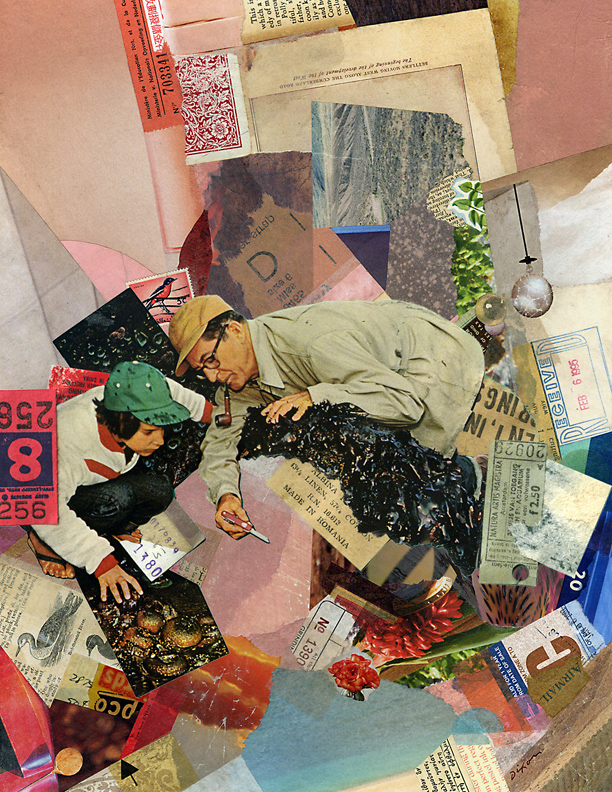 I’ve explored placing the central element against different backgrounds from my previous compositions, according to the constraints of the project. A final pasted version integrates the same subject within an entirely new “terrain” of ingredients created specifically for the entry. It’s my first official salute to a hundred years of Merz — in all likelihood, the most pioneering concept in the history of collage.
I’ve explored placing the central element against different backgrounds from my previous compositions, according to the constraints of the project. A final pasted version integrates the same subject within an entirely new “terrain” of ingredients created specifically for the entry. It’s my first official salute to a hundred years of Merz — in all likelihood, the most pioneering concept in the history of collage.
As an artist, Merz means more to me than finding a place of my own. In the words of the great innovator, it is about “creating relationships, preferably between all things in the world.” I know that I’ve used the quotation a number of times at this site, but is it not as true today as it ever has been? Upwards of 500 works have been submitted to the Kanyer exercise from artists worldwide, another indication of how collage has exploded in the emerging era of social networks.
The Apprentice Merzologist
collage on book cover by J A Dixon
8.5 x 11 inches
part of the #findingaplaceofmyown project
Yutori ~ a personal perspective
Sunday, February 17th, 2019“I am immensely influenced by the colors and textures of this little town. There is a softness about the buildings and landscape. Faded by the sun and rain. Mellowed by humidity.”
— Teri Dryden
Last year I mentioned that, if possible, I would have stowed away in Teri Dryden’s art supplies when she left for a residency at Shiro Oni Studios in Onishi. The entire notion of a small-village retreat in rural Japan seemed as far-fetched to me as actually hiding in her luggage, so the next best thing was getting to follow her “ARTventure” online.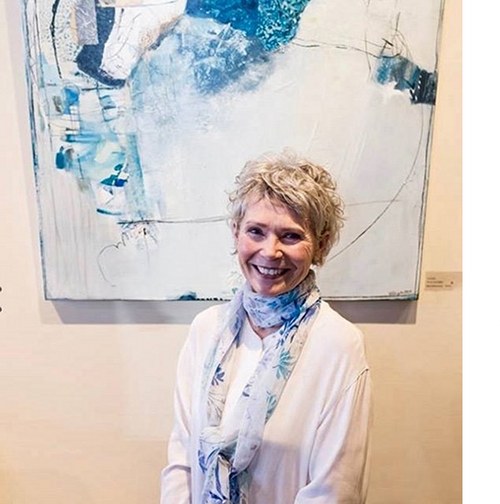 Three years ago, at about the time of the Juxtapose exhibition in which we both took part, she was deliberately shifting from collage making to another period devoted to painting. Would her experience in Asia mark a new phase?
Three years ago, at about the time of the Juxtapose exhibition in which we both took part, she was deliberately shifting from collage making to another period devoted to painting. Would her experience in Asia mark a new phase?
An answer to my question was likely to come this month. My anticipation began to build when I learned Dryden was hanging a show of recent works at B Deemer Gallery in the Crescent Hill neighborhood of Louisville. Dana and I made the opening reception of Yutori a must-attend event on our calendar of winter outings. As soon as I entered the space, I felt surrounded by something I could only sense as ‘mastery,’ and it was the kind of splendid first impression that every exibitor dreams of imparting. When I spoke briefly to the artist, she expressed a conviction that the immersion in Japan had at long last enabled her to “fuse collage and painting” as a single medium.
I was struck by the overall impression of the show, a mood that was independent of the typical urban hubbub of mingling visitors. A serene dynamism emanated from every piece. Each one invited the observer to penetrate its harmony of constrained color, spatial activity, and fluent mark-making.
The blog entries that Teri posted during her residency had captured the spirit and distinctive flavors of an energetic cultural adventure, but her process in the studio would remain unspoken. Now — moving from wall to wall, composition to composition — I could finally share a small measure of something that must have been nearly impossible to describe. It is simply embedded in the work itself. I won’t soon forget how pleasing and rewarding it was to experience firsthand her evolving integration of not only collage and painting, but the metaphysical sense of place within an artifact crafted by hand. What is truly on display at Yutori is how a creative individual’s personal receptivity and high level of spontaneity can artfully harness such a fusion.
If you are anywhere near Kentucky, I urge you to see this show.
An extraordinary fusion
of collage, painting,
and sense of place
is on display at
Yutori: New Works
by Teri Dryden
Sayonara 1
collage on paper by T Dryden
15 x 11 inches
from her residency at Shiro Oni Studios, 2018
the uncanny path . . .
Monday, January 14th, 2019“What more can we ask than to never know what to expect?”
— Paul Violi
The opening reception for the annual New Year New Art exhibition at our Community Arts Center was a massive success. Collage artist Connie Beale had a superb artwork on display, but she managed to slip out before we could include her in a group picture. So, we asked the ever-helpful Kate Snyder to grab a shot of “three collage dudes,” back in the corner where Robert Hugh Hunt was showing a new addition to his “20th Century Icons” series — President Jimmy Carter. I was delighted to see included within the mixed-media portrait a collection of Jimmy heads that I’d surrendered to Robert earlier in the year. 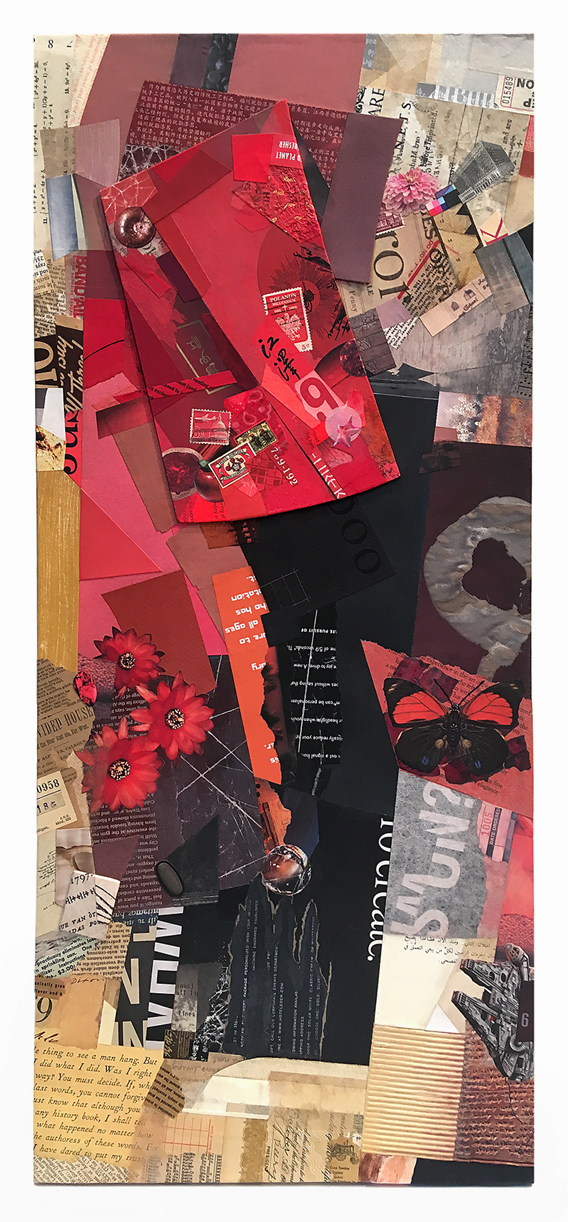 Strangely enough, the envelope had been lurking in my stash for decades, after the faces were clipped from newspapers during the Carter presidency. It can take a while for certain elements to find their destination, on the uncanny path toward a collage outcome.
Strangely enough, the envelope had been lurking in my stash for decades, after the faces were clipped from newspapers during the Carter presidency. It can take a while for certain elements to find their destination, on the uncanny path toward a collage outcome.
My Harmonic Squall was hanging nearby. As these things often play out, I was a bit more pleased with the piece each time I saw it. The residual sense of heightened criticism was continuing to wear off. One certainly doesn’t want the effect to move in an opposite progression. It makes me think of the companion artwork that just as easily could have been part of the exhibition — an extreme vertical that I called Strategic Quake. Both were the result of an evolved process that I touched on in last week’s entry. I’ve been meaning to post the one that wasn’t selected, too (above), along with an image detail (below, for a zoomed-in look). “Spatial manipulation, a unified color scheme, and compositional balance” might be a good way to describe the goals I’ve set for a collage abstraction. It needs to look strong from a distance, with the ingredients becoming the “brushstrokes” that provide visual interest at a closer viewing distance.
Strategic Quake (detail)
collage on fabric by J A Dixon
12.5 x 28.25 inches
available for purchase
Precursors have precursors
Tuesday, August 21st, 2018“We do not analyze works of art because we want to imitate them or because we distrust them.”
— Paul Klee
The other day the world learned about an unpublished Ernest Hemingway short story. If there had not been a Mark Twain first, would literature know Hemingway’s writings at all? Could there have been an Isaac Asimov, Stan Lee, or Gene Wolfe without a Verne or Burroughs? The J.K. Rowling body of work without an Austen or Tolkien? 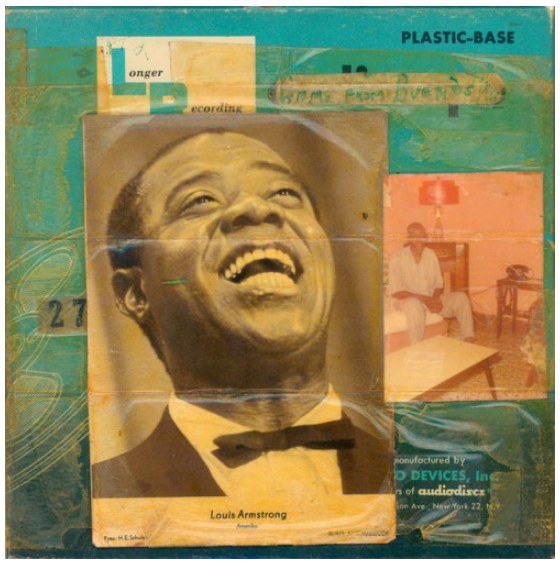 Similarly, all of today’s rock music can be linked to direct influences — to bands such as Ramones, Led Zeppelin or the Beatles, which, of course, had their own precursors. Would jazz exist in its current form without the innovations of Armstrong and all those who inspired him? Imagine a contemporary musician saying, “I really haven’t paid attention to any music that was recorded before I started to play.” And yet, not infrequently, collage artists will boast that they have little use for art history (all the breakthroughs of bygone creators who dug the swimming pools in which they now frolic).
Similarly, all of today’s rock music can be linked to direct influences — to bands such as Ramones, Led Zeppelin or the Beatles, which, of course, had their own precursors. Would jazz exist in its current form without the innovations of Armstrong and all those who inspired him? Imagine a contemporary musician saying, “I really haven’t paid attention to any music that was recorded before I started to play.” And yet, not infrequently, collage artists will boast that they have little use for art history (all the breakthroughs of bygone creators who dug the swimming pools in which they now frolic).
It is argued that modern artists were the first to decide that visual art would be about art, rather than subject matter. Nonsense. Art has always been about art, because it always has been structured on prior foundations. The idea that any artist can burst on the scene as an original is absurd. Nobody who comes out of early childhood with any level of awareness has not built an inventory of perceptions — countless images from the culture around them. Each of these individual influences involved creative activity based on another bank of stimuli, and so forth, back to the first proto-human who picked up a piece of charcoal to make interesting marks on a stone (and was probably knocked on the head by another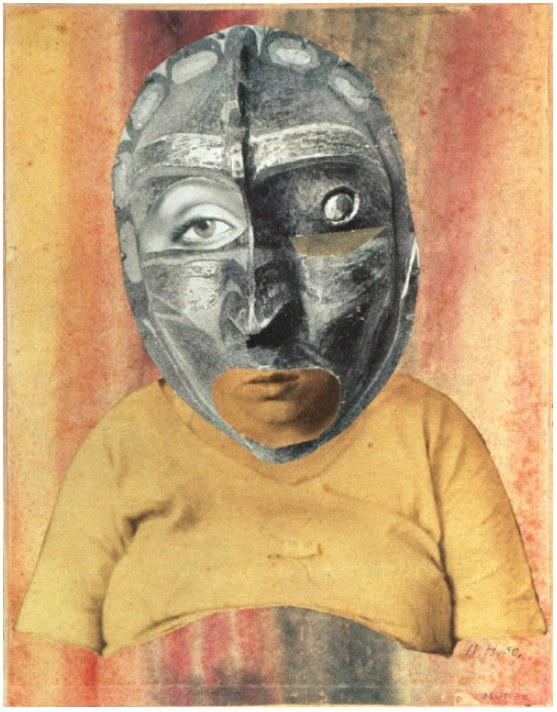
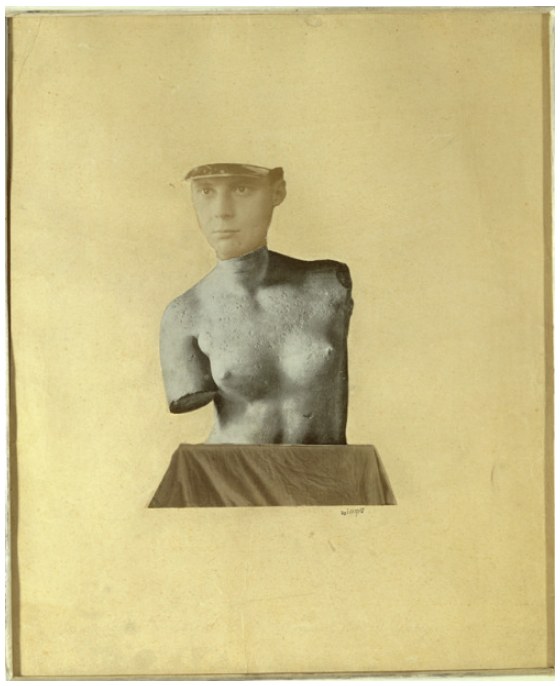 who judged the action as irrelevant to group survival).
who judged the action as irrelevant to group survival).
Perhaps I have belabored my point. Perhaps it is a point that anyone who reads this would not need emphasized in the first place. Isn’t it obvious to us that no art form is more about all these churning influences from untold visual decision makers — painters, printers, illustrators, photographers, designers — than the medium of collage itself? So, let us all continue to study the collage artworks of the explorers who came before us, to trace the direct lineage of their concepts and techniques, to recognize that valuable inheritance in the work of our peers, as well as in the composition taking shape on the surface before us, and then, fully informed, to push confidently into the second century of collage.
Tranquil Ode (to Merz)
collage homage by J A Dixon
9.5 x 11.875 inches
Purchase this artwork.
Abstraction in Collage
Saturday, March 10th, 2018“In the ’20s, dadaist Kurt Schwitters collected bits of detritus such as cigar bands and bus tickets and used them in collages. They were shocking then but with the passage of time have taken on the aura of classics: vibrantly colored and harmonious arrangements of abstract forms and only incidentally assemblages of junk.”
— John Ashbery
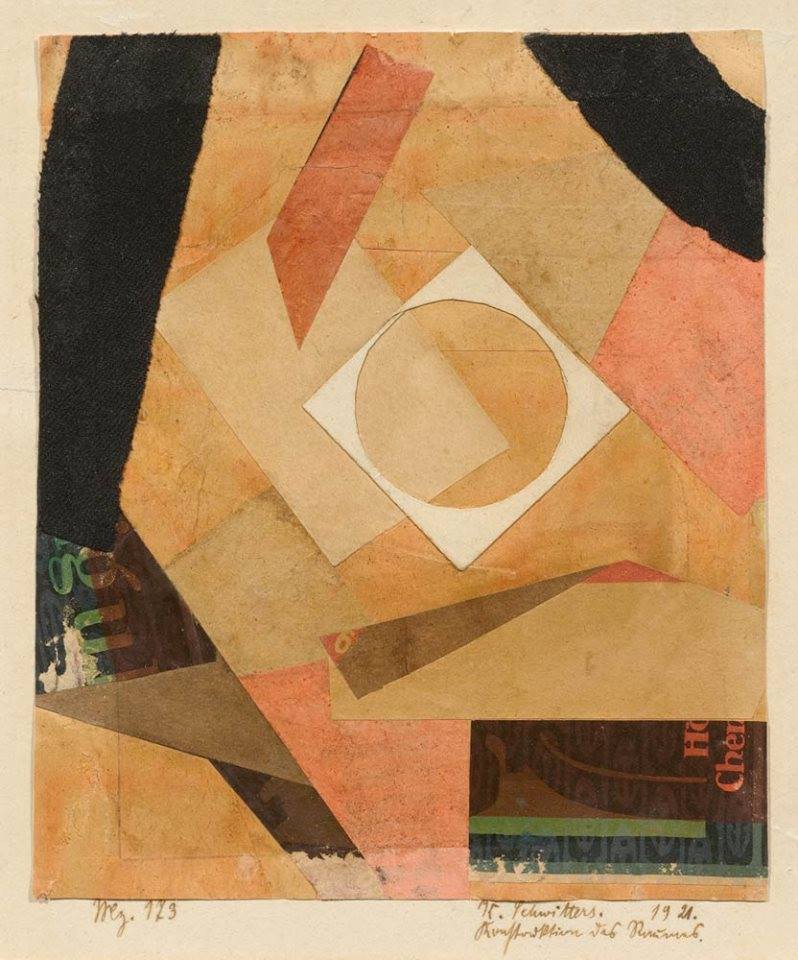
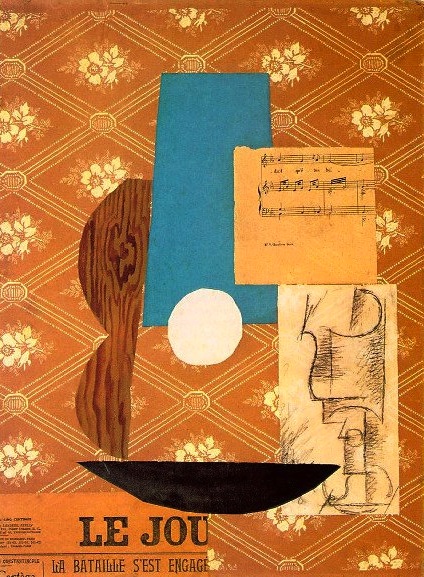 About a hundred years ago, a handful of Europeans had set out to invent what we now know as the medium of collage. Nearly all of them were painters. From the beginning, collage was rooted in modern art concepts that were emerging at the same time — the fundamentals of abstraction. Thus, the evolution of abstraction and collage in the 20th century are entwined, and remain so in a burst of contemporary activity in this post-centennial period. Next year will mark a full century of Merz. Artists working in collage abstraction carry the “creative code” of Kurt Schwitters and his seminal innovations.
About a hundred years ago, a handful of Europeans had set out to invent what we now know as the medium of collage. Nearly all of them were painters. From the beginning, collage was rooted in modern art concepts that were emerging at the same time — the fundamentals of abstraction. Thus, the evolution of abstraction and collage in the 20th century are entwined, and remain so in a burst of contemporary activity in this post-centennial period. Next year will mark a full century of Merz. Artists working in collage abstraction carry the “creative code” of Kurt Schwitters and his seminal innovations. 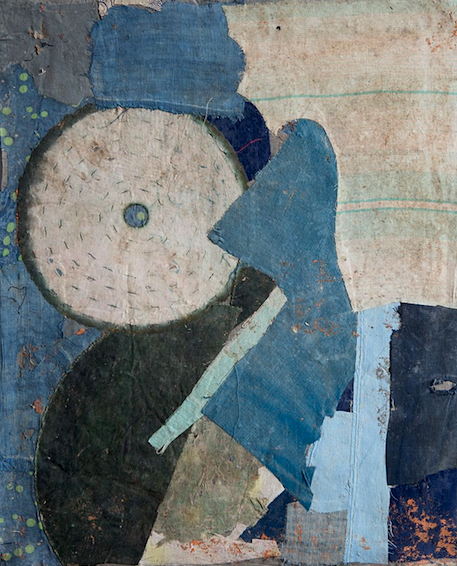 But, allow me to pause here and point out something that has become increasingly obvious: conventional art history was woefully male centered. Intentionally or not, the discipline would downplay or ignore many exceptional women artists, and that includes collage antecedents which were largely the domain of females, especially in the domestic or folk arts. For example, an interesting feature at moowon.com highlights the forgotten art of Chinese textile collage.
But, allow me to pause here and point out something that has become increasingly obvious: conventional art history was woefully male centered. Intentionally or not, the discipline would downplay or ignore many exceptional women artists, and that includes collage antecedents which were largely the domain of females, especially in the domestic or folk arts. For example, an interesting feature at moowon.com highlights the forgotten art of Chinese textile collage. 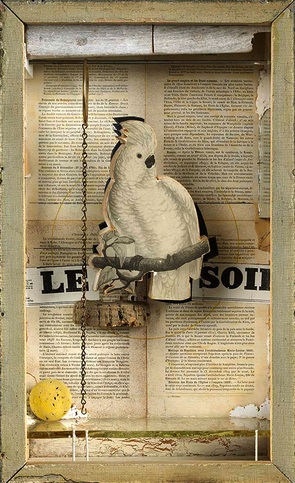 Picasso lifted visual ideas from tribal cultures. Cornell borrowed techniques tied directly to Victorian crafts. We understand that now. Modern art did not spring fully formed from the brow of Zeus like the armored goddess Athena. Fast forward to 2018. Many of the most accomplished and widely recognized collage artists of today are women. And the best part is that we know about them.
Picasso lifted visual ideas from tribal cultures. Cornell borrowed techniques tied directly to Victorian crafts. We understand that now. Modern art did not spring fully formed from the brow of Zeus like the armored goddess Athena. Fast forward to 2018. Many of the most accomplished and widely recognized collage artists of today are women. And the best part is that we know about them.
Melinda Tidwell is one of the dedicated abstractionists in collage that I enjoy following. She has a solid and very articulate designer “upstairs” guiding each decision, but her regard for the unexpected is a strong part of her intuition. Last summer, she published a two-part discussion of “order versus disorder” at her blogsite. It features abstractions by Lance Letscher and is well worth checking out.
Please indulge me as I share examples of collage abstraction from artists who continue to favorably capture my eye. Some of them range into mixed media in a way that remains very much collage. Others are strictly “painting with paper.”
Merz is alive and well in the 21st century, my friends.
(title unknown)
abstract collage by L Letscher
(title unknown)
abstract collage by M Tidwell
11zc18
abstract collage by Z Collins
Elysburg IV
abstract collage by C Chapman
Ellington
abstract collage by D McKenna
Osmosis 3
abstract collage by C Emeleus
Antoinette
abstract collage by W Strempler
Music
abstract collage by S Kraft
from her series, BALANCE
abstract collage by S A Herman
Day 18 of 40
abstract collage by C Neubauer
Red Cottage — from her series, SENSE OF PLACE
abstract collage by P A Turner
(title unknown)
abstract collage by J C Martin
Reap
abstract collage by G Cooper
Cognitives and Conclusions
abstract collage by S Ringler
Dynamic Stability
abstract collage by J A Dixon
Empress of Wings — When is the flight over?
Sunday, January 15th, 2017“I tell you what gets harder over the years, it’s coming to grips with ‘is it finished yet or do I want to make one more change?’”
– B L Cummings
Being invited by our Community Arts Center to participate in the annual winter invitational of regional artists never fails to jump-start my burst of year-end activity. Submissions to the January-to-February show are required to have been completed after August. The request comes in late October, but, instead of selecting from completed works, 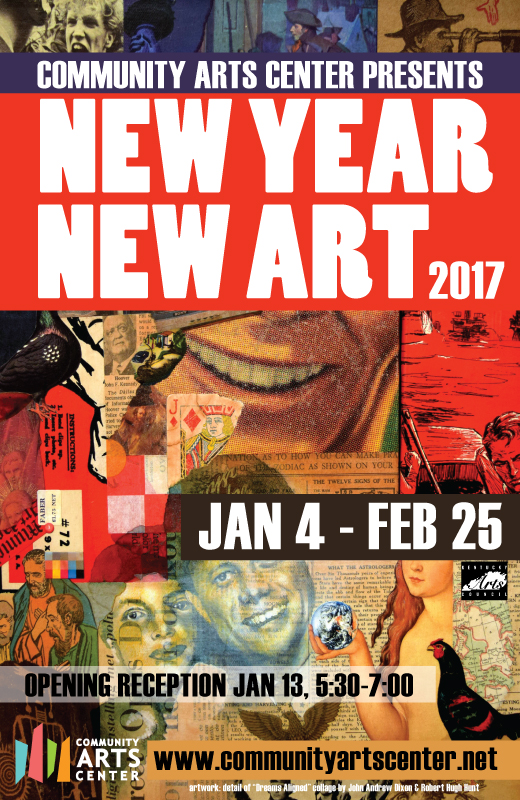 I’ll typically commence a work specific to the exhibition in early November. I set a goal this time to produce my largest collage ever and to shoot some in-progress photos.
I’ll typically commence a work specific to the exhibition in early November. I set a goal this time to produce my largest collage ever and to shoot some in-progress photos.
The first image below indicates how I blocked out the early composition with mostly larger elements. The second represents how the color-quantity contrasts and spatial manipulations resolved themselves. The last image is the finished work with final layering and a few closing refinements.
It is a challenge to maintain a high degree of spontaneity when creating so large a work (for me, the dedicated miniaturist). It helps to carry a momentum of small-scale experimentation into the process, plus there are things I do to boost an “organic” flow. For example, if there are aspects of the color scheme I want to enhance, rather than acquire and position new elements one by one and invite too much preoccupation with each, I will quickly prepare a batch of ingredients and place them into the composition as rapidly and as intuitively as possible, responding to my impression of the evolving totality. Instead of pondering two-dimensional locations, the eye or hand moves first, and one learns to trust whether something “belongs” or not. Also, it can be difficult to know when the winding down to conclusion should start. At a certain point, I become conscious of a natural progression toward closing refinements (more logical considerations for balancing and harmonizing the overall effect). Noticing an escalation of rational deliberation can be the reliable signal that a piece may nearly be done — almost time to “pull the plug and sign it.”
We are unlikely to hear any collage artist say that completing a work is an exact science. Personally, if I walk away from something that I suspect is finished, it is less probable that I will continue to monkey with it when I come back. It is beneficial to have an objective consultant — in my case, a trusted partner willing to instruct, “Don’t touch it!”
I also should note that the exhibition is an opportunity for Robert Hugh Hunt and me to unveil another major collaboration (more to say about that next time). Creating the interlocking mixed-media construction was an interesting process. The result is something unconventional, and we’re pleased that it was selected as the promotional image for the show.
an early and a late
stage of my largest
collage painting to date
(click each for larger view)
Empress of Wings
collage on canvas by J A Dixon
42.25 x 30.375 inches
available for purchase
Structural Integrity
Friday, September 7th, 2012“Though he was not connected with any political party, his art was regularly vilified as a threat to traditional German values, while he himself was denounced as ‘unpatriotic’ or, just as often, insane. Yet Schwitters thrived on public opposition, and from 1919 to 1923 he created a succession of Merz pictures which are now seen as his greatest contribution to twentieth century art. These pictures carry an inner tension that derives from the sensitive juxtaposition of abstraction and realism, aesthetics and rubbish, art and life, and their innate dynamism is one of the characteristics of Merz.”
— Gwendolen Webster
Today’s featured collage, inspired by some of the superlative work being done by my friends during this centennial year for the medium, is a bit larger than my typical miniature. To produce an “artifact,” I began with the cover of a ruined book, and before long I realized I had a strictly nonrepresentational composition on my hands. Created spontaneously at a close viewing distance, it wasn’t until I stepped back after completion that it brought to mind the kind of image one might view from the window of an upper story, looking across an urban landscape, with light and shadow playing off facades and roof lines. The way in which the mind attempts to unravel layers of symbolic meaning from the purely abstract is endlessly intriguing to me.
Those of us who create art within this particular genre are indebted to the increasingly exalted legacy of Kurt Schwitters and his original conception of Merz. I often think about how we have been liberated to explore the inexhaustible potential of this approach and to disclose our aesthetic vision within the accepted playground of modern art. Never forget that the man who fully defined this visual language for us did so at genuine risk to his personal freedom and safety. We may not always describe our works as a tribute to the enduring idea of Merz, but that is precisely what they are. Schwitters said, “Merz means creating relationships, preferably between all things in the world.” One fine aspect of that is the new connections and friendships that grow out of mutual interest in collage during its one-hundredth year. Check out the online galleries of Launa D Romoff, Teri Dryden, Scott Gordon, and Joan Schulze. You may agree with me that these artists are among today’s “Heirs to KS.” I hope to discover many more and to share their creative output at this site. Please stop by again soon.
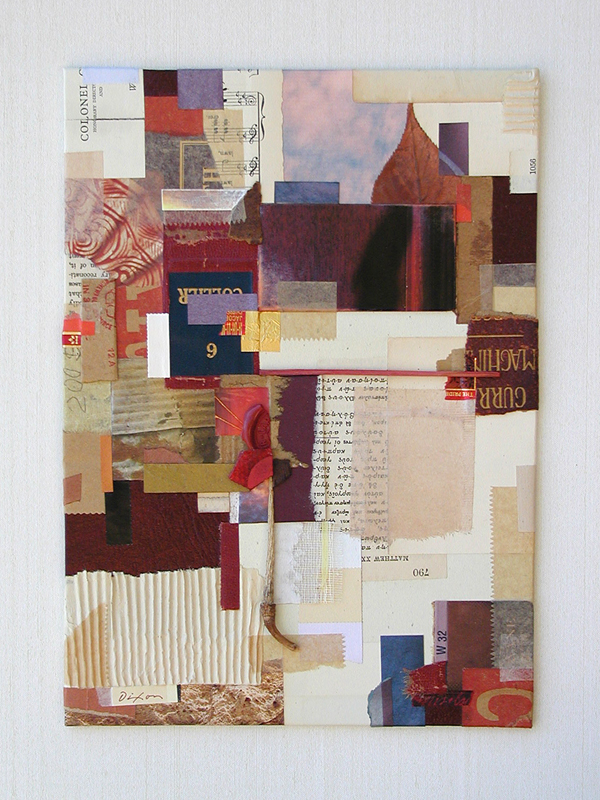
Structural Integrity
collage artifact by J A Dixon
8 x 10.5 inches
• S O L D
